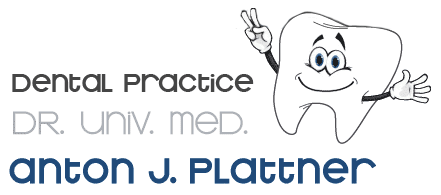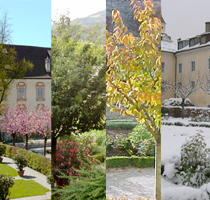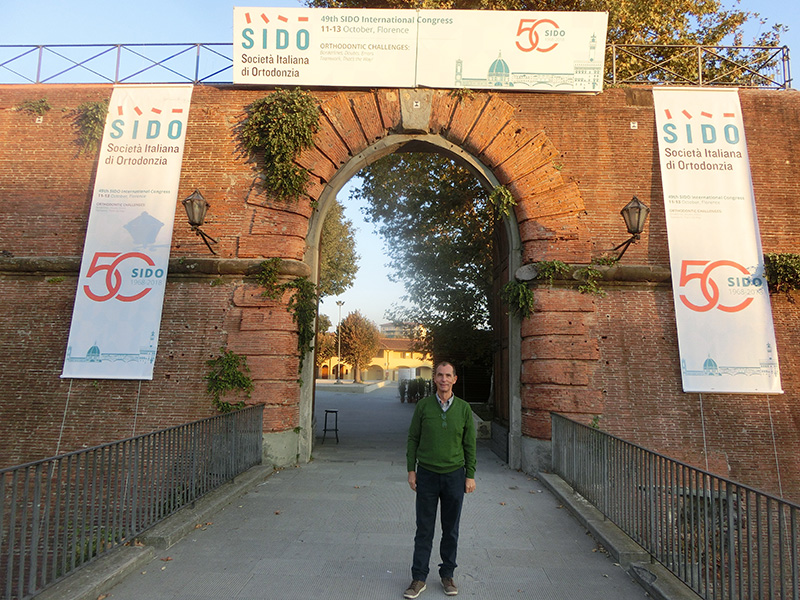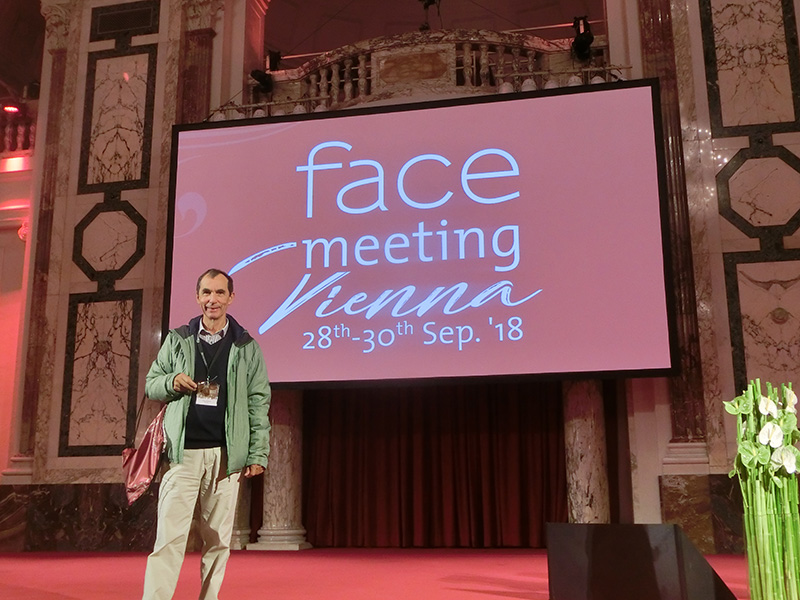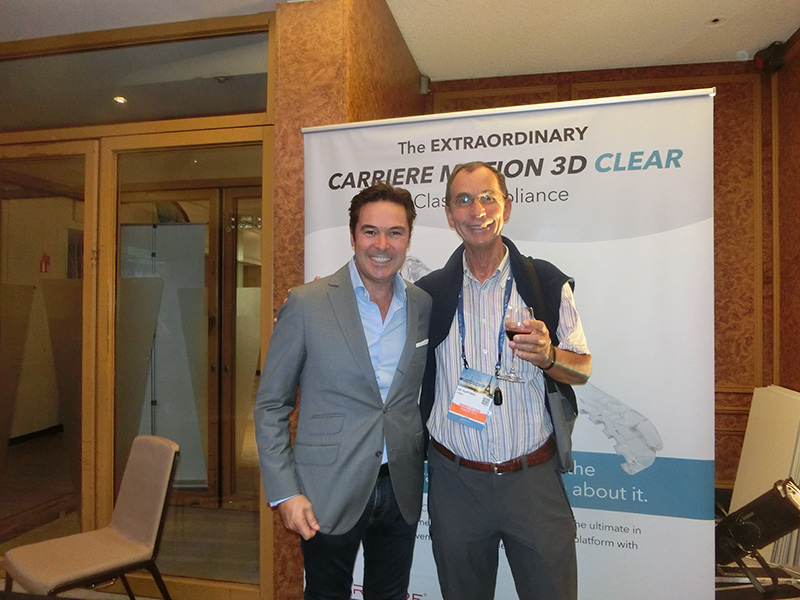SIDO Congress at Florence
Partecipation at the SIDO congress from 21 to 22 march 2025 at Florence
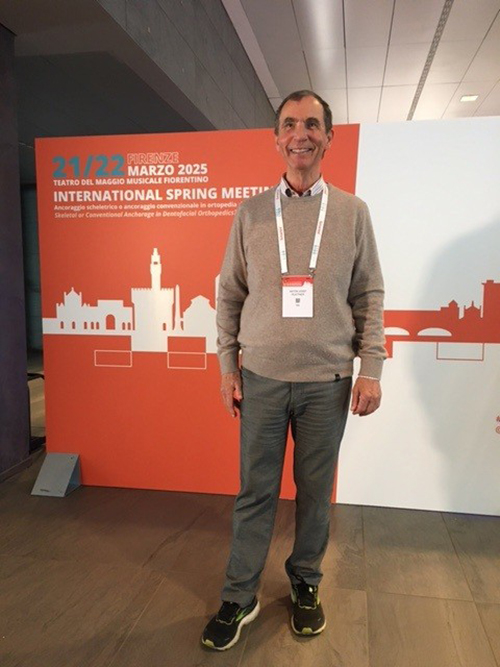
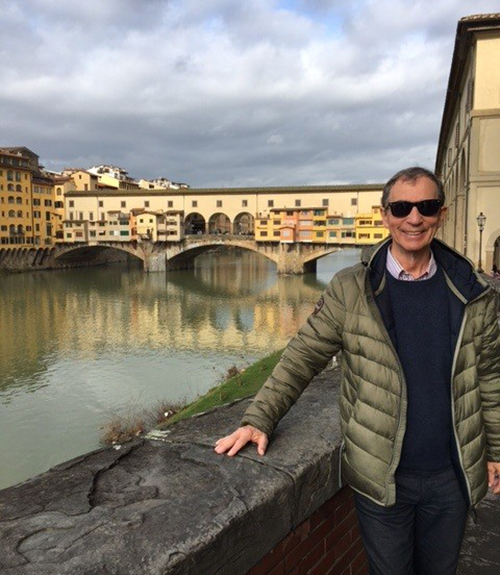
Growing Smiles
Partecipation at the International Congres in november 2024 at Torino
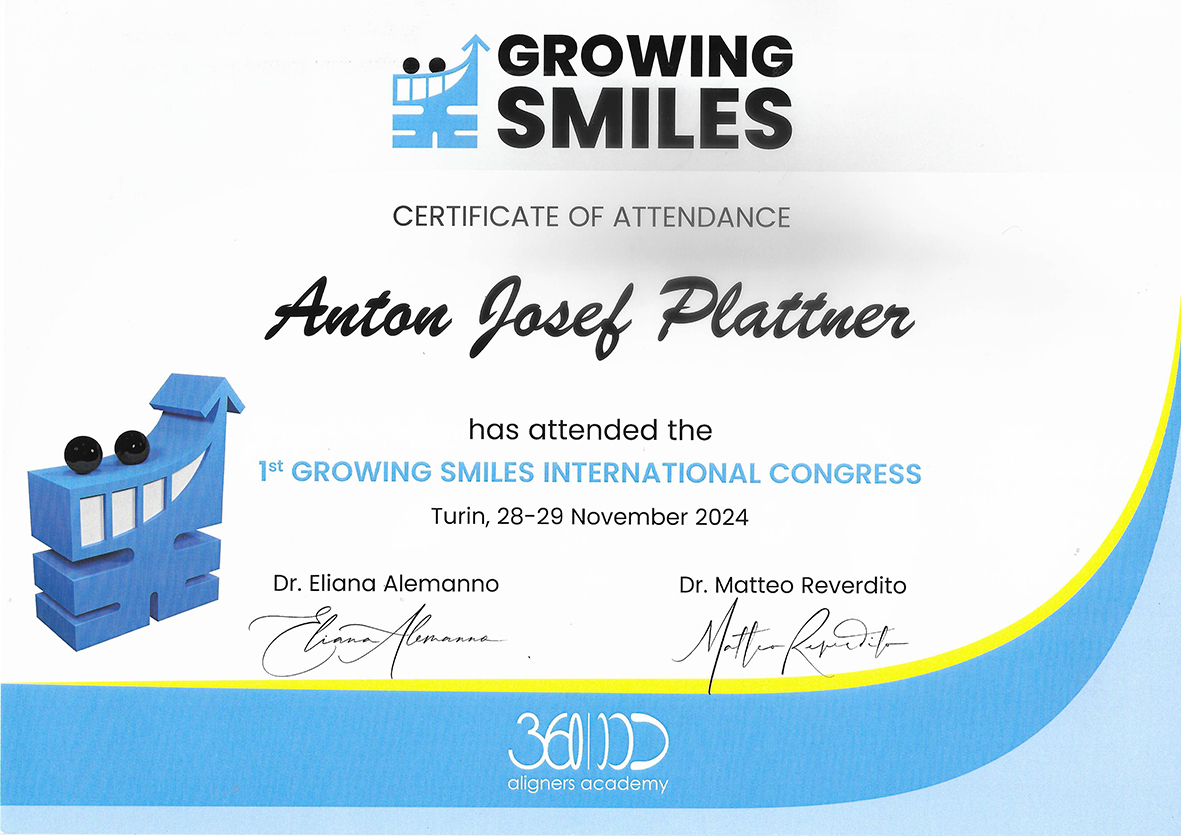
Envista Summit in Barcelona
At the Envista Summit in Barcelona - May 2024
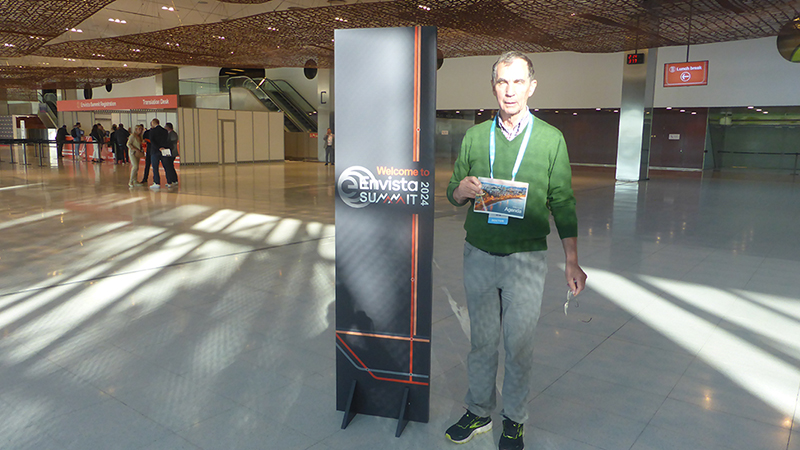
AAO Congress in New Orleans
At the AAO Congress in New Orleans - May 2024 with Dr. Sandra Khong Tai and Dr. David De Franco.
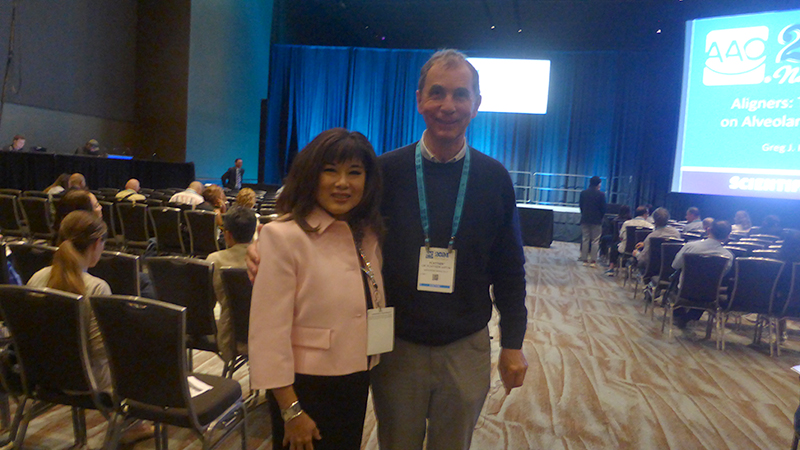
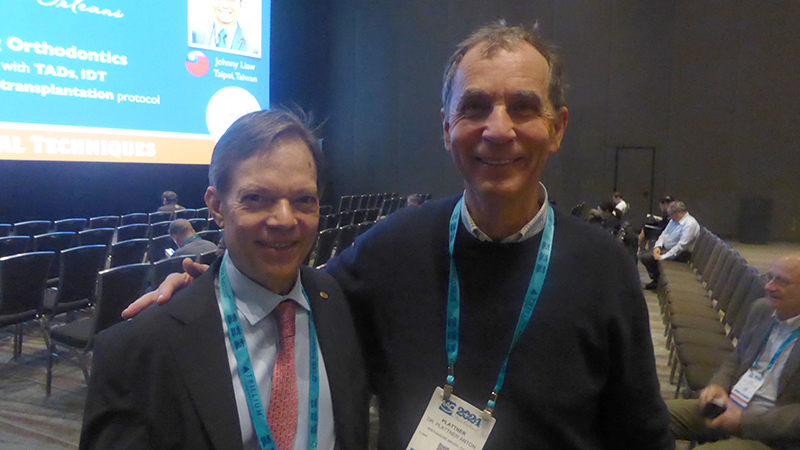
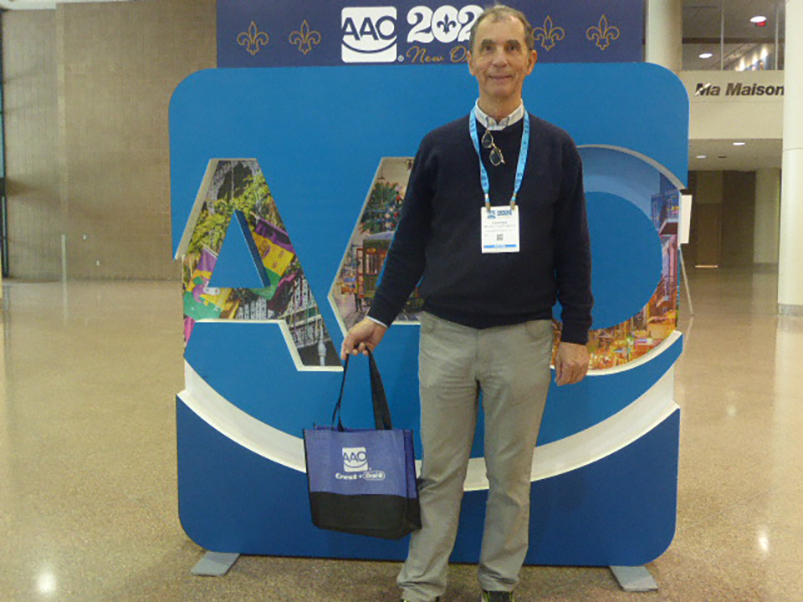
Book presentation
South Tyrol and its teeth
Friday, 16 february 2024 6.30 p.m. Bressanone municipal library
Dr Anton Josef Plattner reports from his more than 40 years of experience as a dentist and gives an insight into the life of teeth, from the first milk tooth to complicated procedures.
He also gives tips on proper dental care.
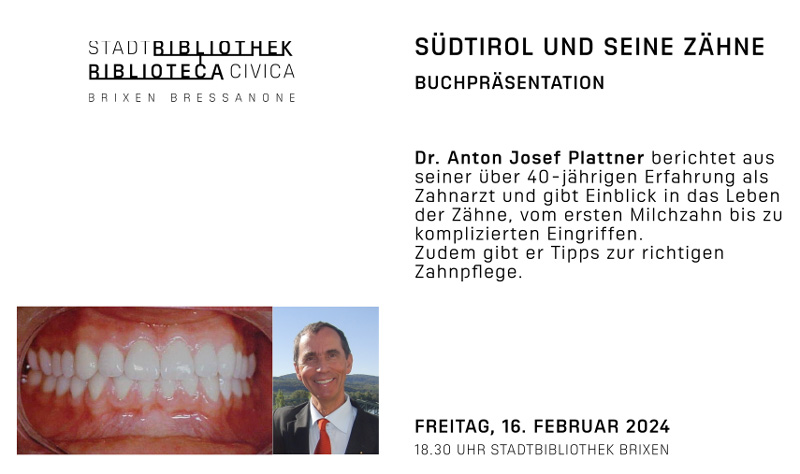
SIDO Congress in Rome
At the SIDO congresso in Rome with Prof. Ama Johal (London) in october 2023
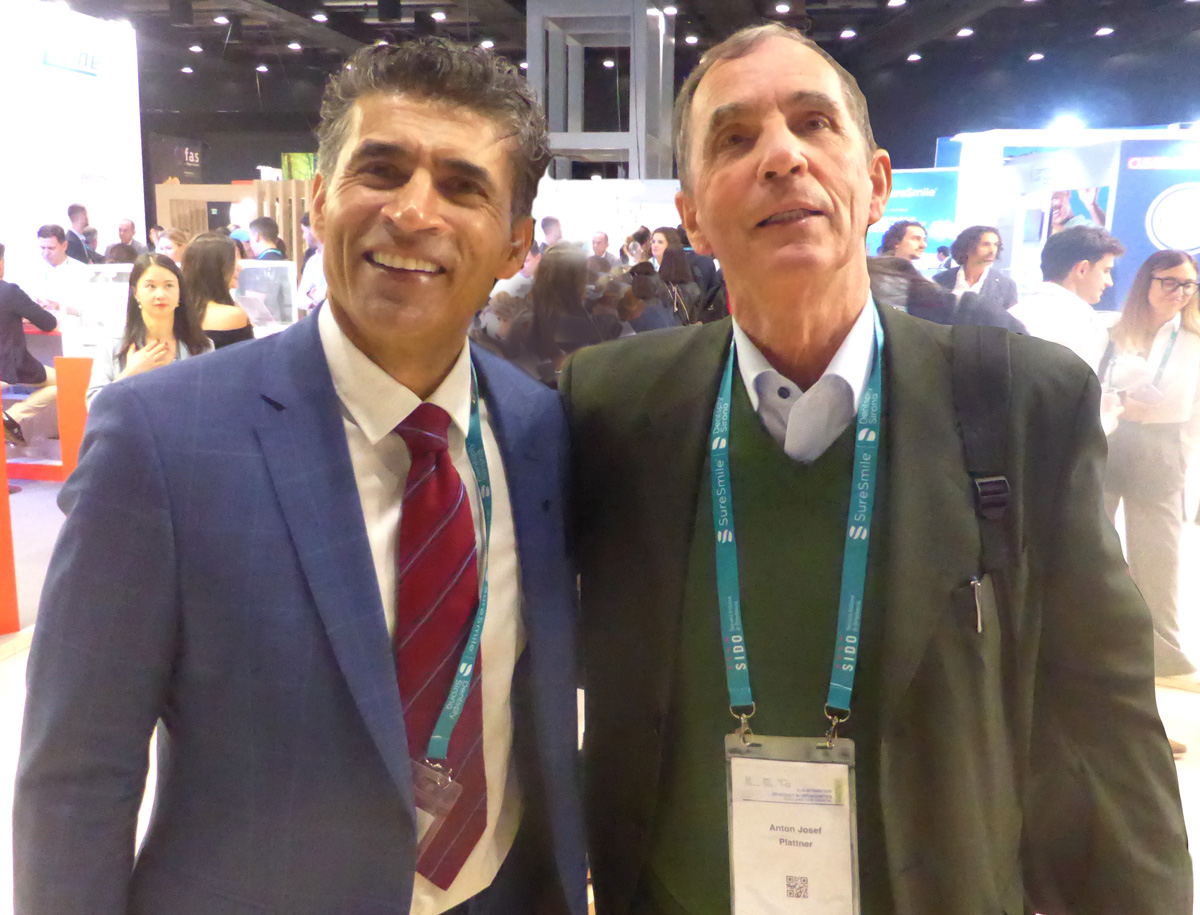
AAO Congress at Chicago
At the AAO congress in April 2023 at Chicago with Dr. Chris Chang (Taiwan) and with Prof. Letizia Pirillo (Naples)
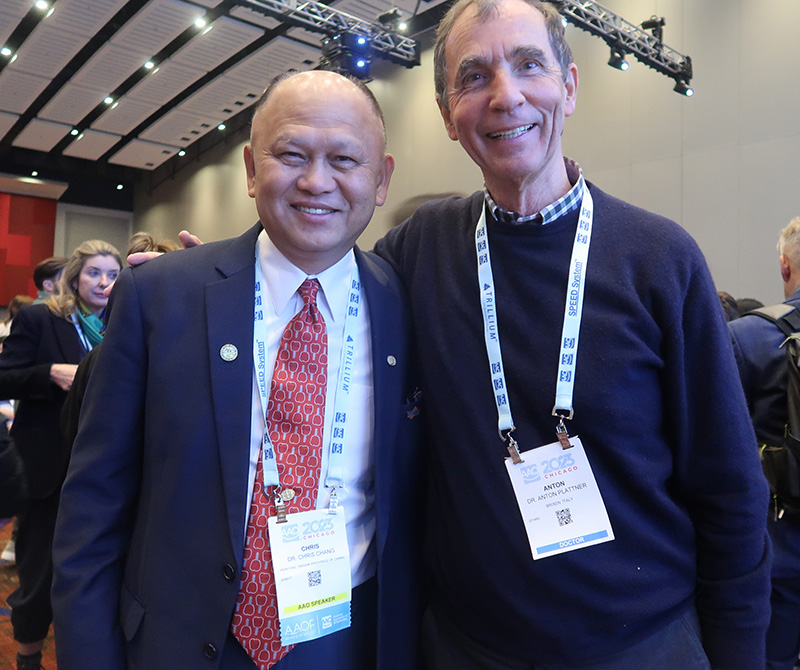
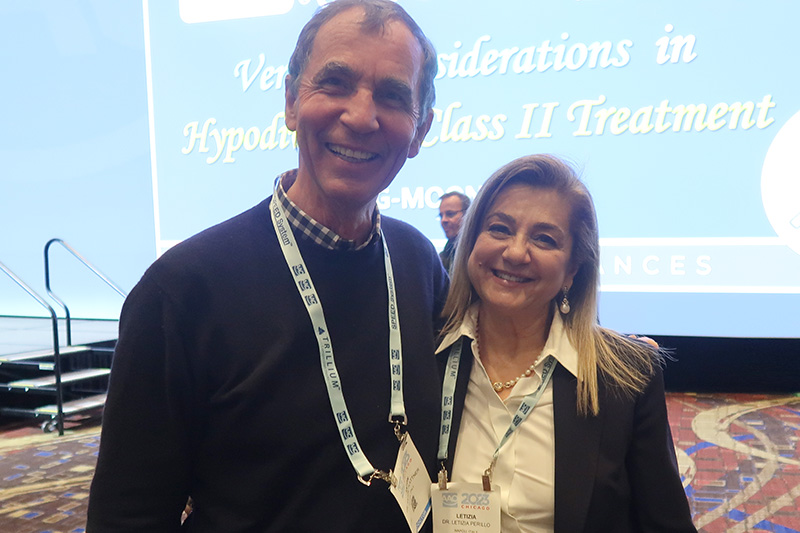
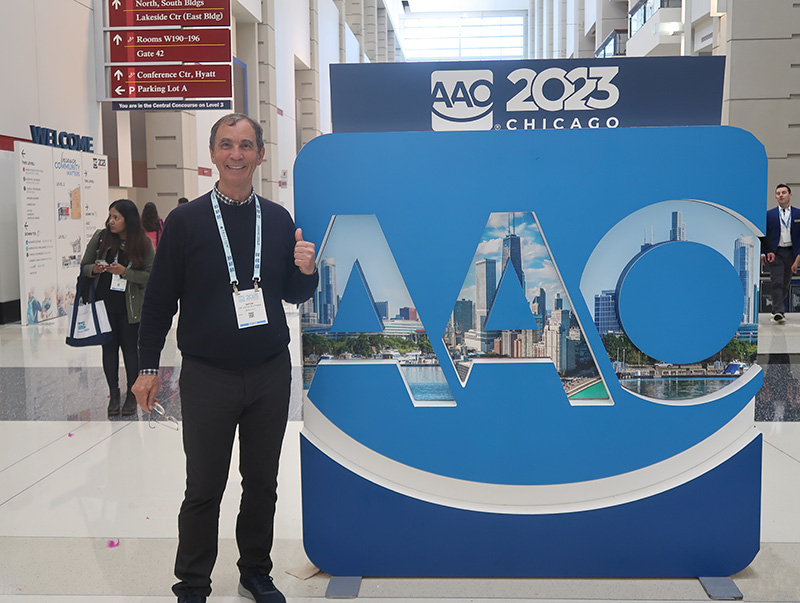
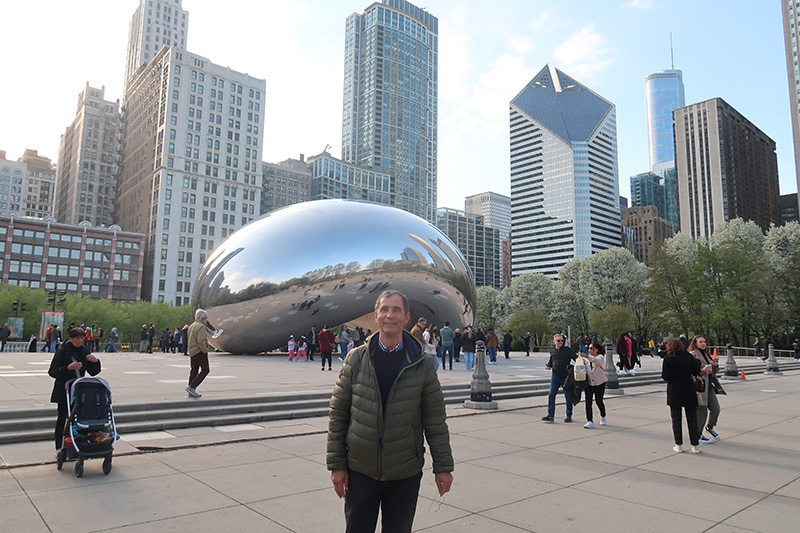
SIDO congress at Rome
At the SIDO International congress from 17. to 18 march 2023 ar Rome with Prof. Fleming (London) and Prof. Giancotti (SIDO president, Rome)
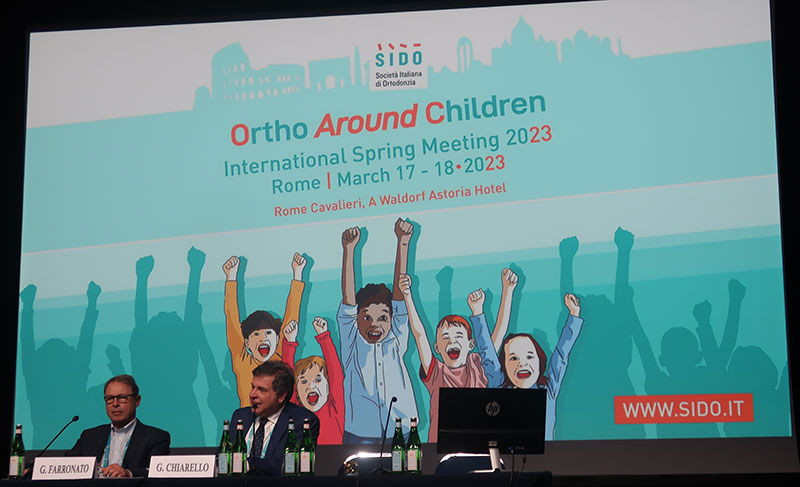
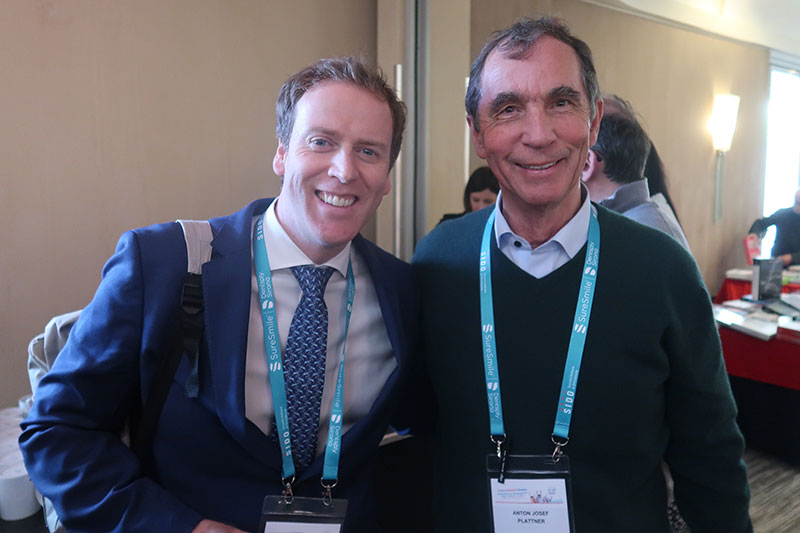
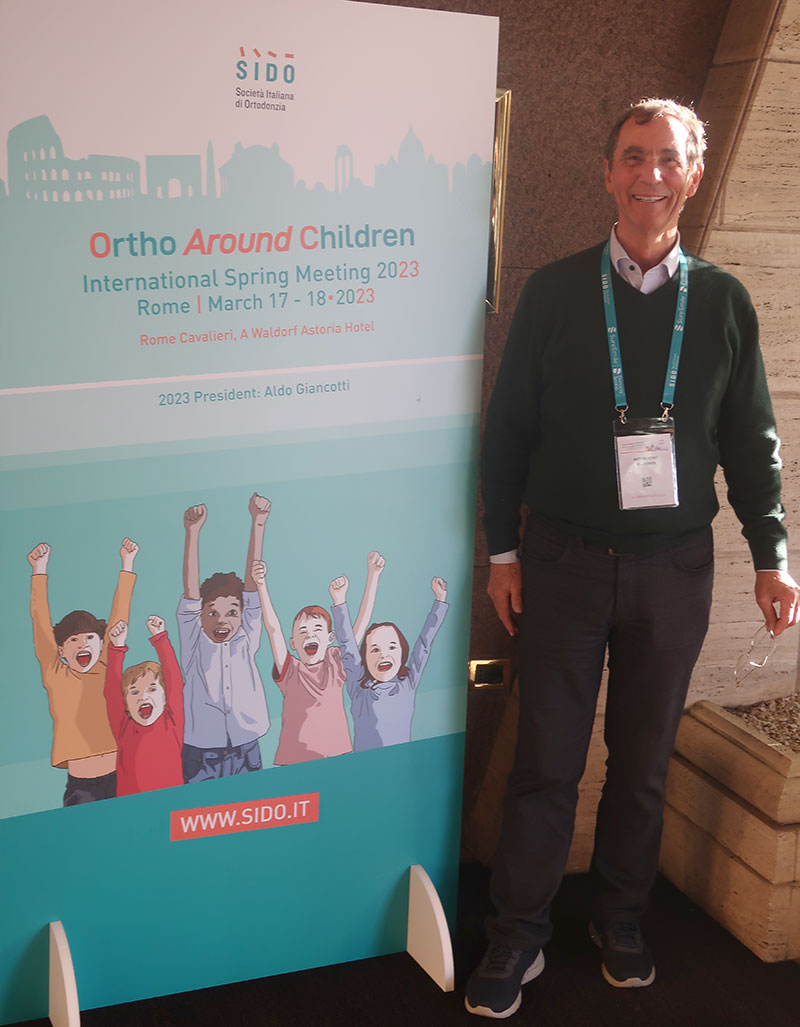
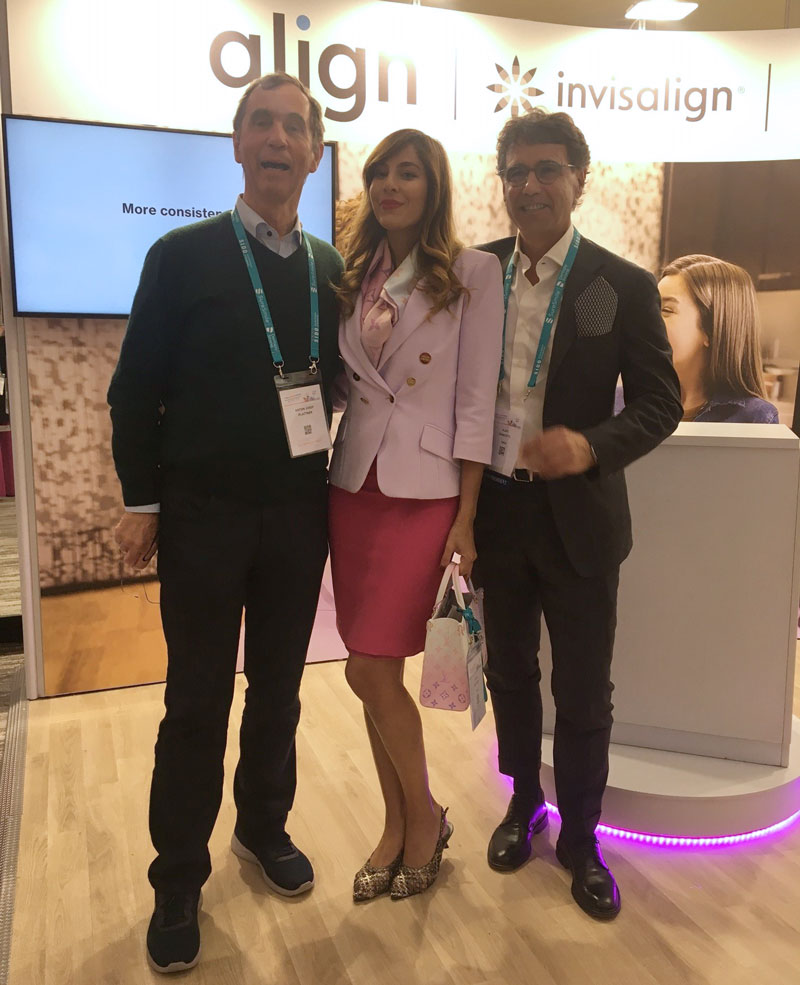
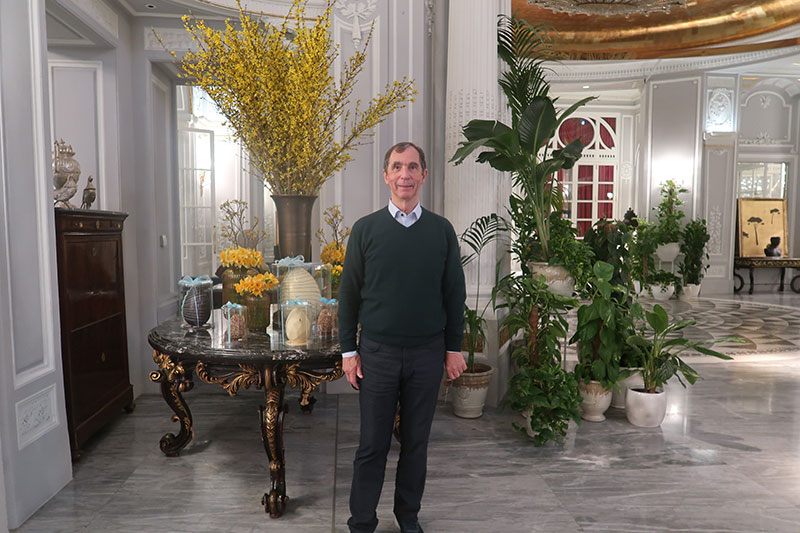
Continuing education is the be-all and end-all
An interview with the well-known dental physicist Toni Plattner from Bressanone
The original interview in the "SÜDTIROLERIN" can be read here (in German).
Dr. Anton Plattner is a very inquisitive contemporary. In an interview with today's edition of the “SÜDTIOLERIN”, the dentist from the episcopal city of Bressanone talks about the year 2022, which is about to come to an end. He also talks about conferences and congresses that focus on dentistry and the importance of lifelong learning in his profession. He also looks ahead to his private life and the year 2023.
Dr. Plattner, the year 2022 is coming to an end. Were you again on duty at congresses and conferences this year?
Yes, indeed, I was on the road again this year for dental health around the wide globe. In February, I took part in the Austrian congress, which was held this time in the city of chamois Kitzbühel. I learned a lot of interesting facts and new things about splints, the method of invisible tooth adjustment. It was really interesting! The speaker from the Federal Republic of Germany reported that he makes transparent splints for almost all patients. This way, the regulation of the teeth and jaws is more successful. Furthermore, he spoke about the fact that his clientele now includes more adults than children and adolescents.
The following month I was present at the SIDO congress in the Ligurian capital Genoa. Here I was able to present a patient's case according to my effective treatment method. May was also very intensive, when I attended the AAO World Dental Congress in Miami, USA. It was especially nice that my 16-year-old granddaughter Nadine accompanied me on the long journey. So, she could also listen to the various lectures and see how crooked teeth are currently treated. Through the interesting presentations, I was able to awaken in her an interest in the medical profession, and I am already looking forward to her following in my footsteps.
The Portuguese port city of Porto was the scene of an international splint congress, at which I was also present. And in fall, I was also able to attend the international congress in Florence, which I was very happy about, especially since I have always been committed to lifelong learning. In the picturesque Tuscan city there was a lively exchange around the latest findings in dentistry. Not long ago, I also saw Dr. Ramon Perera in Rome, one of the best orthodontists internationally.
Exactly twelve years ago now, I completed my master's training with him in Munich. As before, and the visit with him is testimony to this, continuing education is the key to success. I can say similar things about the personal exchange of ideas with the globally active speaker. The Corona pandemic prevented the live dialogue, but this year I was able to see and/or meet old and new faces again. Last year I was a congress participant in Japan, but only on the online way, even if one had the advantage to listen to all lectures on the digital way for one month. So, I was able to present a patient's case from my practice here as well.
Is there also some news from your own practice? Has your son Florian already taken the helm, or are you pulling the (dental) strings in the background?
Well, I like to leave the pulling of the strings to my pretty and very empathetic assistants, who naturally have the patients' best interests at heart (laughs).
In my practice, both my son and I have again been able to do a lot for dental health in Bressanone. The trend is clearly moving in the direction of digital dentistry. This includes digital impressions and digital two- or three-dimensional X-rays. It is obvious that minimally invasive dentistry is now indispensable. In the meantime, fewer and fewer healthy teeth are being used as bridge abutments; in the case of a tooth gap, the indication for implants is the gold standard in our practice.
What remains is the outlook for the new year 2023...?
From a private point of view, I can only report positive experiences. I have already mentioned the interest of my granddaughter Nadine. In addition, I was able to witness three baptisms of my daughters' children. My wife Astrid, with whom I was able to celebrate the ruby wedding anniversary (40 years, editor's note), and I now have eleven healthy grandchildren. All are happy and enjoying life. I will step back more and more and watch the young generation - namely my daughter Julia with my son-in-law Markus, but also my son Florian - and enjoy life. I am pleased that for some years now the young ones have been carrying on everything to the satisfaction of everyone, and by that I mean the patients, but also mine.
Interview: Andreas Raffeiner
SIDO Congress at Florence
At the SIDO International congress from 14. to 16 october 2022 at Florence
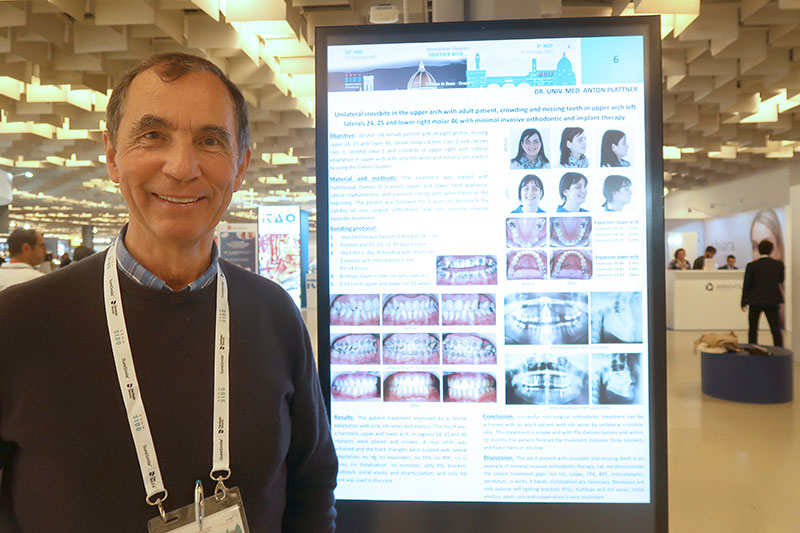
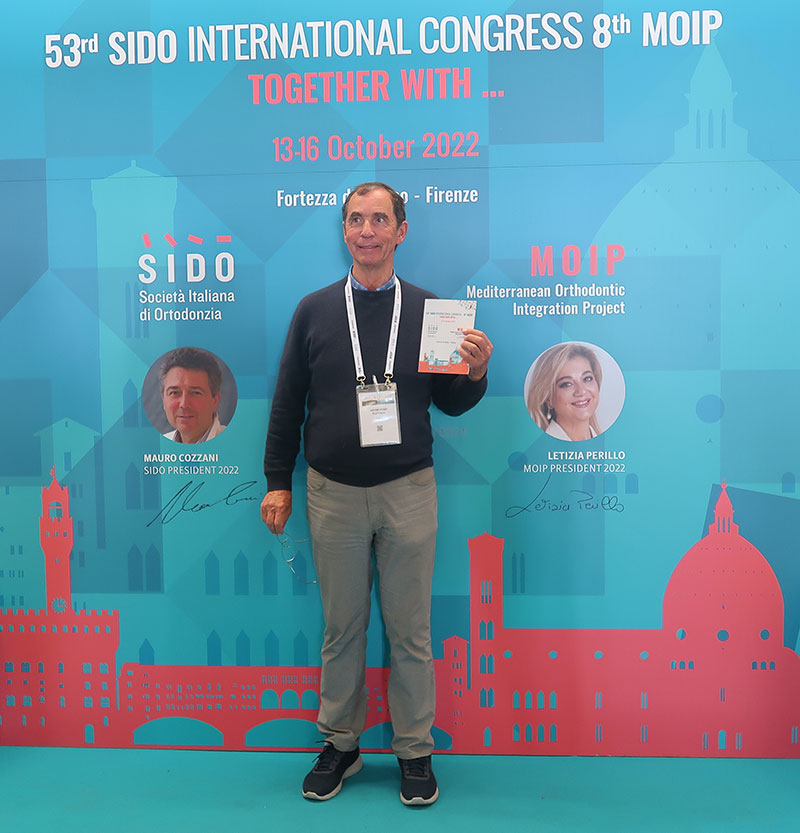
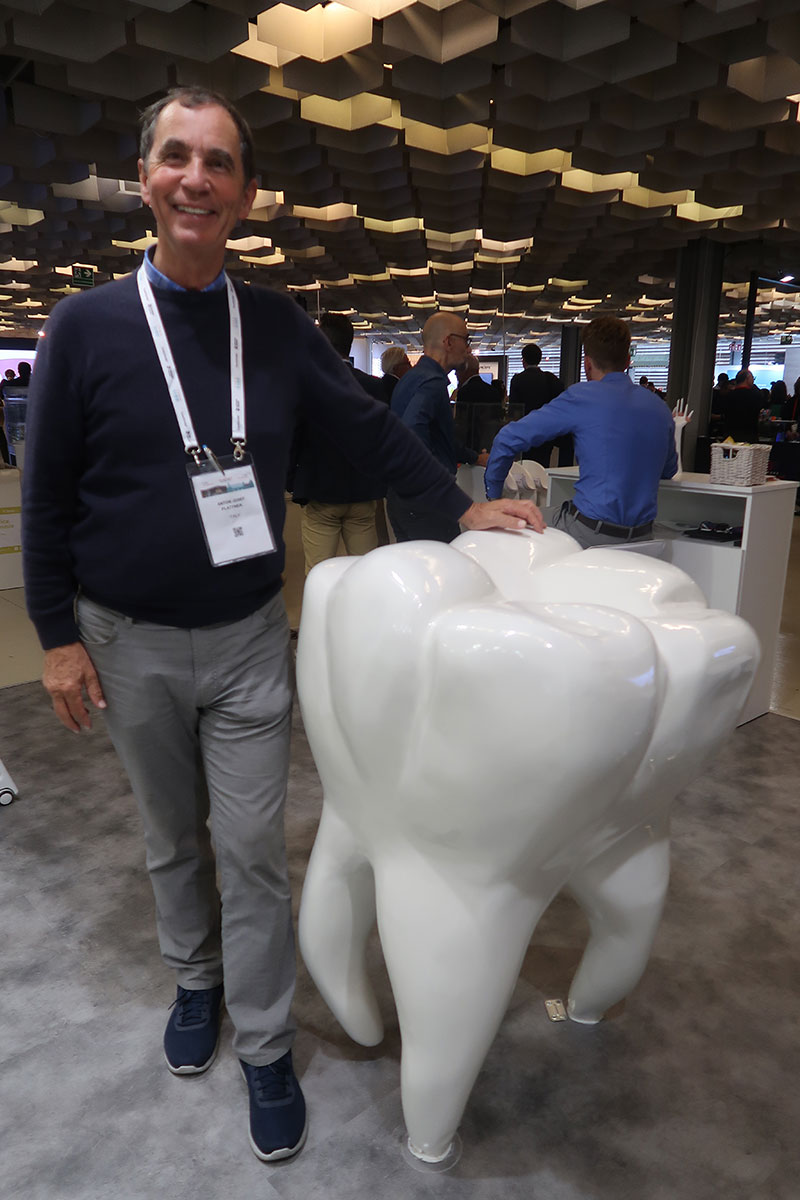
Congress European Aligner Society EAS at Porto
At the congress EAS from 1. to 2. July 2022 with Dr. Francesco Garino and Dr. Tommaso Castroflorio and with Dr. Bruce McFarlane and Dr. Talal Dimachki
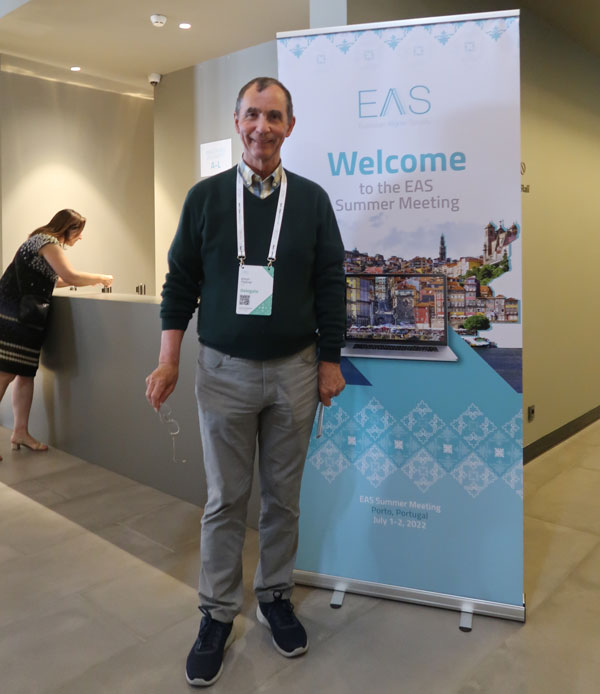
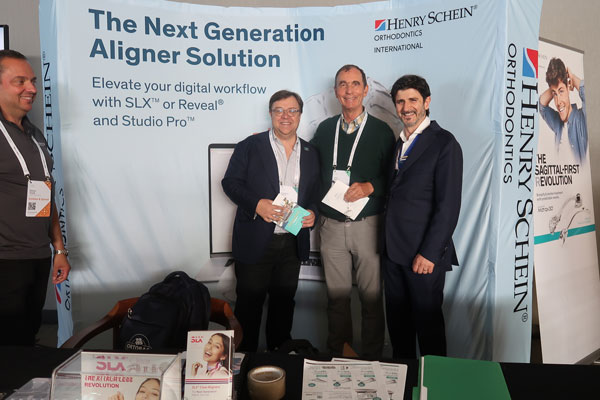
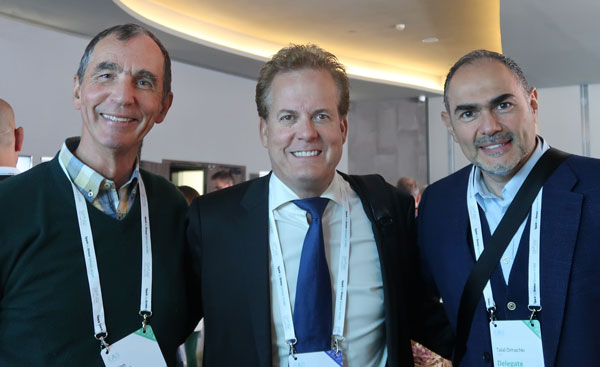
Congress AAO at Miami
At the congress at Miami from 20 until 24 may 2022 with Prof. Mc Namara and Dr. Bylow
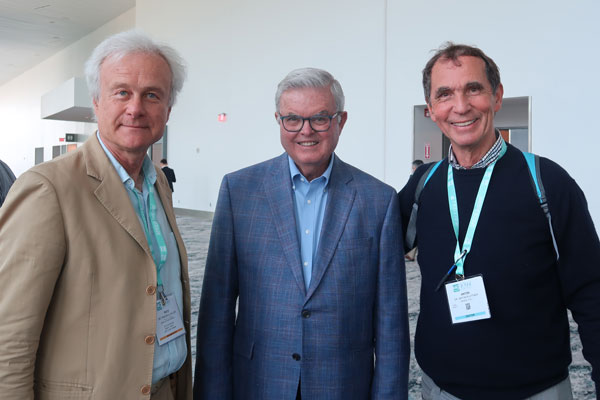
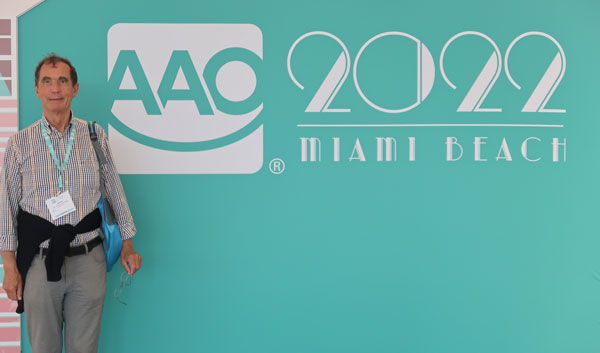
Laughter is healthy
Being a guest of the dental physicist Dr. Anton Plattner from Bressanone
When the well-known dentist from Bressanone Dr. Anton Plattner looks back on four decades of activity and has to report about the ups and downs of his professional career, he proudly claims that there have been almost only successes, which he certainly also owes to the good training he received at the University Clinic of Innsbruck. He also wants to take the opportunity to thank his dear wife Astrid, who has supported him energetically and unconditionally from the very beginning. Of course, this also applies to his loyal team, that he has gathered around him. Because in the end that is decisive for a good treatment.
Profession as a vocation
Dr. Anton Plattner is a dentist with heart and soul. Even more: He has made his profession to his vocation. He has learned to see dentistry as a whole. Even though nowadays specialization, which produces well-trained specialists, predominates, the dentist from the cathedral city recognizes that the overall view of general dentistry is being lost. The dentist from Bressanone finds that a pity. Nevertheless, he would take the same path all over again.
When asked what gives him the feeling of reaching into the mouths of familiar and unfamiliar people with rubber gloves, illuminating their throats with a headlamp, applying syringes to mucous membranes and “working” on patients with forceps and drills, the likable and always good-humored dental physicist from Bressanone knows that you have to stay above it, when you treat patients. To be successful, you have to master difficult situations in the mouth. This applies to implantology as well as to other surgical procedures. In the end, the anticipation of the final result, which corresponds with a happy patient with a beautiful smile, is high.
Between empathy and digitalization
The fact that a visit to the dentist is often associated with fear and worry is nothing new. Dr. Plattner understands this. What’s more, he emphasizes that his profession requires enormous empathy. In his eyes, the patient must feel that his problems and he himself are taken seriously and are understood. It shows the empathic character of the man from Eisacktal, when he says that he wants to treat like he wants to be treated. He is most pleased when he has been able to handle a difficult situation well and when patients smile at him brightly after treatment and are happy with the result. However, it is a challenge to make the right diagnosis before the procedure. Photos, X-rays and models help with that. Thanks to increasing digitalization, X-rays can be evaluated better and more neutrally, which leads to the creation of a perfect treatment plan, which is good from the patient’s point of view.
Dentists will always be needed
Dr. Anton Plattner knows that his profession will always be needed, whether for dental prophylaxis or simply to straighten crooked teeth. Thanks to implantology, fewer and fewer teeth are being ground down for a bridge. As patients are often getting more demanding, the demand for cosmetic dentistry is higher than ever. A beautiful smile in society has its advantages; similar things can be said about beautiful assistants for the dentist. But the most important thing is the caring approach to patients, which can be considered the key to success.
Lifelong learning is beneficial also for dentists
In times like these, it is definitely a plus for dentists, too, if they are always continuing their education. Dialog with international colleagues is particularly important to the man from Bressanone. Only then can you separate the much-cited wheat from the chaff. It is no disadvantage to be naturally inquisitive and curious, as Dr. Anton Plattner is. That makes many things easier. Participation in international congresses and lecturing on various topics have made him a luminary who has also written down his experiences in a beautiful book that has been passed on to colleagues.
The dental profession is not an easy path
The humble dental physicist from the Episcopal city emphasizes that the path to becoming a dentist is no piece of cake. Besides strength and energy, you need one thing above all: self-discipline. You operate within a very narrow range and have to be perfect. Success is no coincidence, but a result of years of work. In fact, it doesn’t matter whether you work as a dermatologist, plastic surgeon or dentist.
The joy of the profession is in the foreground. Acquiring new professional knowledge and empathy are also expedient to being successful. Nevertheless, there is definitely room for improvement in the interpersonal relationship between patient and dentist. If the fears of the patient are perceived and the dentist treats without causing more fear or pain for the patient, the initially anxious patient will be less frightened next time.
The dental physicist from Bressanone and dental floss
Dr. Anton Plattner admits that he cleans his teeth two or three times a day with fluoride toothpaste. Dental floss and interdental brushes are also not to be missed. He knows that everyone is responsible for their own dental health. Knowing today how to prevent tooth decay, he tries to take care of his teeth as much as possible. In terms of cleaning, his methodology can also be seen as setting an example. Nevertheless, Anton Plattner admits that he himself does not like to go to a colleague. In any case, though, healthy teeth represent the foundation for overall health.
Dr. Anton Plattner and the corona pandemic
The dentist and his entire team are constantly exposed to infectious diseases. The corona virus currently buzzing around is no exception. Nevertheless, there are some colleagues who do not want to be vaccinated. Anton Plattner does not understand that and sees every doctor as a role model for society, who should set a good example. Without vaccination, he is convinced, we will not be able to fight this pandemic.
A life away from the practice
Dr. Anton Plattner, affectionately called Toni by trusted patients and friends, does not think about periodontitis, caries, oral hygiene, braces or the next lecture at a conference around the clock. Quite the opposite: the man from Bressanone is through and through a person who likes to be in nature. It makes no difference whether he is out with his family or alone. He enjoys the fresh air to the fullest. He also enjoys traveling to learn about new countries, places, cultures and people.
An appeal for the readers of the SÜDTIROLERIN
Despite the current circumstances, people should not forget to enjoy life. Without humor, and here the man from the cathedral city has to laugh, life is only half as much fun. He would like to indirectly take care of that, too. Because only with beautiful teeth, treated by Dr. Anton Plattner, one laughs best, according to the motto “healthy begins in the mouth”. Insiders know that the big cuddly bear is already waiting for them in the practice.
Andrea Raffeiner
<
Congress SIDO at Florence
Live at the congress at Florence from 11 until 13 november 2021
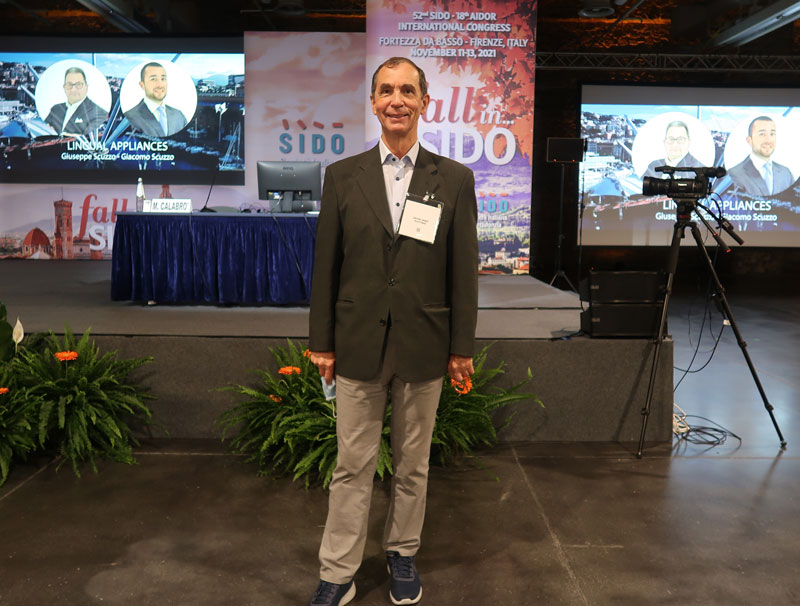
Radio live consultation in Rai Südtirol
Live consultation "Radiosprechstunde" in Rai Südtirol at Bolzano about healthy teeth
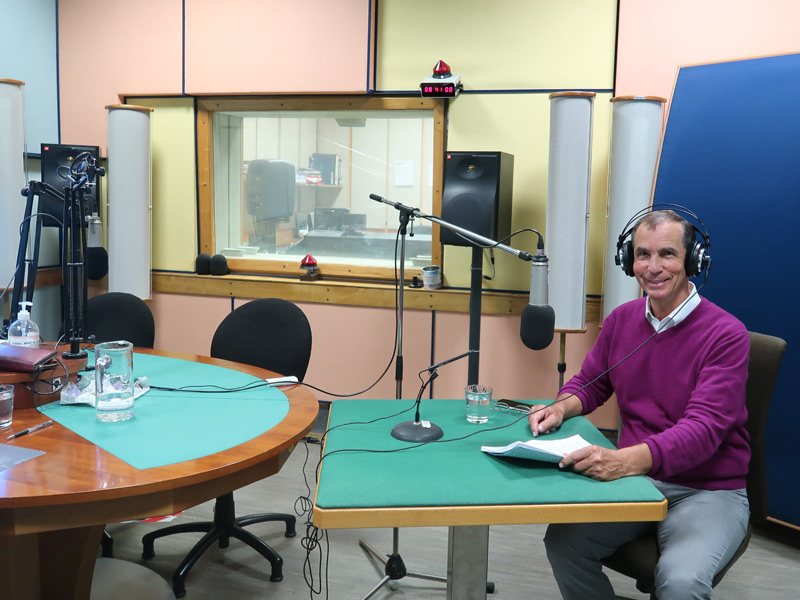
Congress SIDO at Napoli
Live at the congress at Napoli 16-17 july 2021
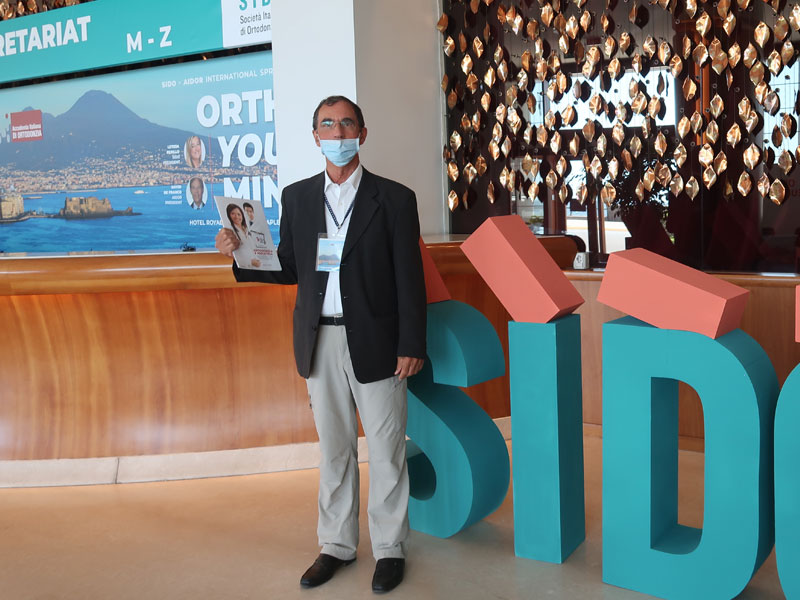
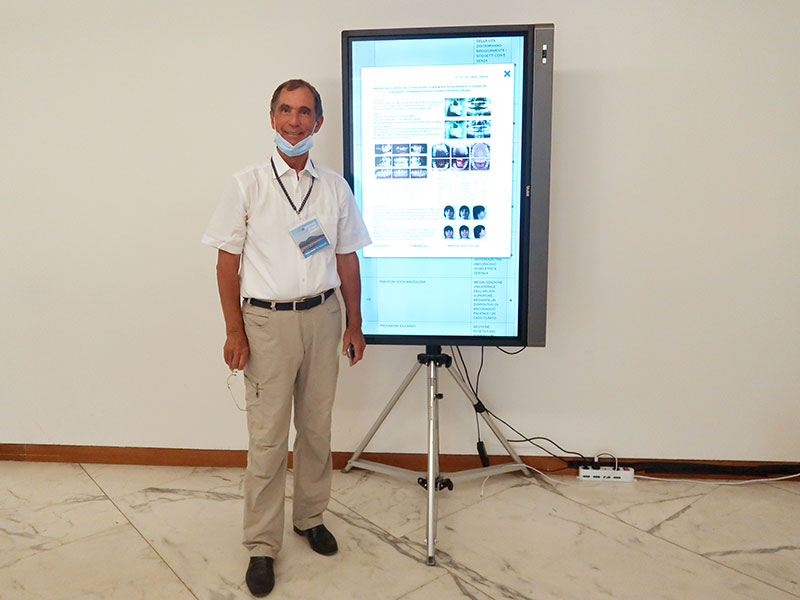
An unusual anniversary: 40 years of the dentist practice Dr. Plattner in Bressanone
Yesterday – Today – Tomorrow
Anton Plattner looks back and forward
Let’s take a look at the time 40 years ago: After eleven years of training at the University Hospital in Innsbruck, the then 33-year-old Dr. Anton Plattner opened his first dental practice. The patients had to climb 64 steps to reach the practice because it was on the third floor without a lift. Every beginning is difficult: In 1981 the banc decided on a loan freeze, because the doctor was unknown in Bressanone. During a dental exhibition in Milan, he was able to sign a leasing contract with Siemens. At 30%, the interest rate was extremely high by today’s standards, but in retrospect there was no other option to finance the establishment of the practice. Thanks are still due to his seven brothers, who helped him with the renovation of the dental practice, and one week after the specialist examination in Innsbruck nothing stood in the way of opening the practice. Plattner likes to look back on this time, because the rush of patients was huge from day one. One can also say that opening a dental practice in the cathedral city was like winning the lottery. After half a year, the practice was fully booked for six months in advance; the high interest rates were no longer a problem. The inhabitants of Bressanone said at the time: Dr. Prattner came, saw and won, especially since there was an enormous lack of dentists back then. The “SÜDTIROLERIN” looks back and forward together with the well-known and popular dentist.
Dr. Plattner as a pioneer in implantology and orthodontics
Born in 1948, Dr. Anton Plattner says that there were six dentists at the time. Nowadays there are more than 20. The training in Innsbruck was very good and practice-oriented, considering the conservative dentistry. Implantology and orthodontics were still in their infancy. In order to be active in these specialist areas, one had to acquire this knowledge privately. Therefore, Dr. Plattner met Dr. Daniel Buser from Bern at his congresses and was able to look over his shoulder in his clinic.
In addition, in 1993 Dr. Plattner became the first dentist in the cathedral city who offered implantology to his loyal patients and, consequently, to put a smile on their faces. Up until that year, many had to travel to Bolzano in order to manufacture implants. This service, which from than on was also offered in Bressanone, turned out to be a great enrichment. The likeable dentist, who continues to educate himself and has a considerable specialist knowledge, completed his training in tooth and jaw regulation in Vienna in 2002, with his Californian colleague Dr. Mc Gann, which had the advantage that from then on every treatment could be offered to his patients.
Satisfied patients as a goal
Being a dentist is an exciting job. Dr. Plattner has always set himself the goal of having satisfied patients. He feels the greatest joy when the person lying on the treatment chair thanks him with a beautiful smile. A feeling of happiness arises. Every day is new and exciting at the same time; even if the job demands a lot of energy and strength, there is no boredom in the dental practice. The wellbeing of the patients is put in the foreground and the man from Bressanone openly admits that he would choose the dental profession again and again, knowing full well that the word profession also includes a vocation and that the enjoyment of the profession is very important.
Continuous training as an ace up your sleeve
Educational courses and seminars allowed Dr. Plattner to travel all over the world. The conferences at world congresses have given him more and more impulses and also the opportunity to learn from mistakes. The secret recipe for enjoying your job is curiosity and lifelong learning. Five years ago, the man from Bressanone wrote a book that he distributed among the professors at the university. It is about the basics of tooth and jaw regulation and the minimally invasive treatment method, that he has acquired with his commitment and his thirst for knowledge and now wants to pass on. If he were to write a book that reviewed the past four decades, he would choose the title “Dentistry through the Ages”. And since Dr. Plattner has never stopped in his development process, you can imagine that he will always come across new research results on this topic and will keep pace with new developments.
Health as the most expensive good
When asked about his best memories, Dr. Plattner says that they are probably those about the birth of his five children. His development from poor student to successful dentist is also a success story that is second to none. He is proud that his two youngest children also have a doctorate in dentistry. Perhaps it was the fact, that from an early age they followed their father’s work closely in his practice; perhaps it is something else. The dentist is happy when he sees his eight grandchildren grow up.
He still thinks sadly about an investment advisor who embezzled a lot of money. But since Dr. Plattner, with his positive charisma, has also mastered the art of forgetting, he would rather look to the future. He wants to stay healthy, and since health is what it’s all about, enjoy the greatest asset in life to the fullest. In the future he wants to take it easy, but he will always be helpful if someone asks him for advice. And that the Plattner dentistry philosophy is continued at the highest level by the two youngest children and the son-in-law in Bressanone makes him look forward to the future with gratitude and satisfaction.
Interview: Andreas Raffeiner
The dentist in the times of Corona
A visit to the well-known dentist and implantologist Dr. Anton Plattner from Bressanone
Anton Plattner has been working as a dentist for more than four decades. In the areas of minimally invasive treatment methods for misaligned teeth and of implantology, the resident of the bishop city has developed into a pioneer beyond the local borders. As far as his time allows, he takes part in international congresses, training courses and conferences. With regard to the current corona pandemic and all its consequences, today’s edition of the “SÜDTIROLERIN” wants to feel the passionate dental physicist – proverbially speaking – on the tooth.
Dr. Plattner, as a dentist, how did you experience the extensive phase of the corona pandemic, especially since medical treatments close to the nose and mouth of a person are connected with direct contact with the exhausted, humid air and are contaminated with an extremely large number of germs?
Like many other dental practices, we had to close the practice for two months. As the pandemic subsided, we were able to treat patients again. Of course, this was only done under the highest precautions. The patient is only allowed to take off the mask on the treatment chair. To protect ourselves from possible sources of infection, we wear a face mask, head covering, a coat and a visor. After each treatment, the surface of the treatment room is thoroughly cleaned with a special disinfectant.
To what extent has the health risk for dental staff increased more than the risk for people who stand very close together in public?
The health risk for employees in a dental practice increased in the sense that, in contrast to people standing close together in public, we have to work very close to the open mouth, and therefore the risk of infection is huge.
In many places, the protective measures in dental practices began immediately in front of the entrance door. Did you also allow your patients to enter only after they were informed about the danger of the situation and asked about possible contact with people who had a corona infection?
As in different places, we also measure our patients’ body temperature when they enter the ordination. This way we can reduce the risk of infection.
Can you outline the daily corona routine in your practice for us?
Everyday life has changed for us to the extend that we have to take greater precautionary measures. The patient’s body temperature is taken when entering the practice and, in case of elevated temperature, he is sent home. All employees are required to wear a face mask, gloves, a coat and a head protection. During treatment, patients are asked to put on protective glasses. But we also protect our eyes with a visor.
The hygiene standards were the be-all and end-all of a dental practice even before the corona era. Gloves, face masks and protective glasses have always been a part of your standard repertoire. Aside from the disinfectant, were there any other things that brought a complete change for you?
Since it has always been of great importance in a dental practice to be as sterile as possible, not much has changed in our standard repertoire. As said, all of our employees are required to wear headgear, a face mask, a coat and a protective visor. In addition, each treatment room is thoroughly cleaned with disinfectant after each treatment.
Doctors from other specialties complained at the beginning of the crisis, that it was difficult for them to get their protective equipment. How was that from the point of view of the dentist Dr. Anton Plattner?
Since our practice was closed during the lockdown, the lack of protective clothing did not turn out to be a problem. When we reopened, the world had already adjusted to the increased demand and had increased the production. So we had no problem getting the face masks, coats and visors.
Shops and restaurants had to close their doors during the lockdown. Members of systemically relevant professions, such as dentists, have continued their work? Was it a personal responsibility for everyone to carry out a treatment?
In order not to expose our employees to an increased risk, we have closed our practice for two months. We only treated patients in great pain, under very strict precautions, and at our own great, huge risk of infection.
Are all tooth-relevant treatments now possible again? With which pain is it advisable to visit a trusted dentist and which pain can be postponed without having a guilty conscience?
Since the risk of infection can now be controlled very well, it is advisable to visit the dentist for all dental problems. Cosmetic procedures, such as the insertion of bridges, can currently also be postponed. However, thanks to the precautionary measures taken, you can still do them with a clear conscience.
Interview: Andreas Raffeiner
<
At Amsterdam with Dr. Stuart Frost - Arizona
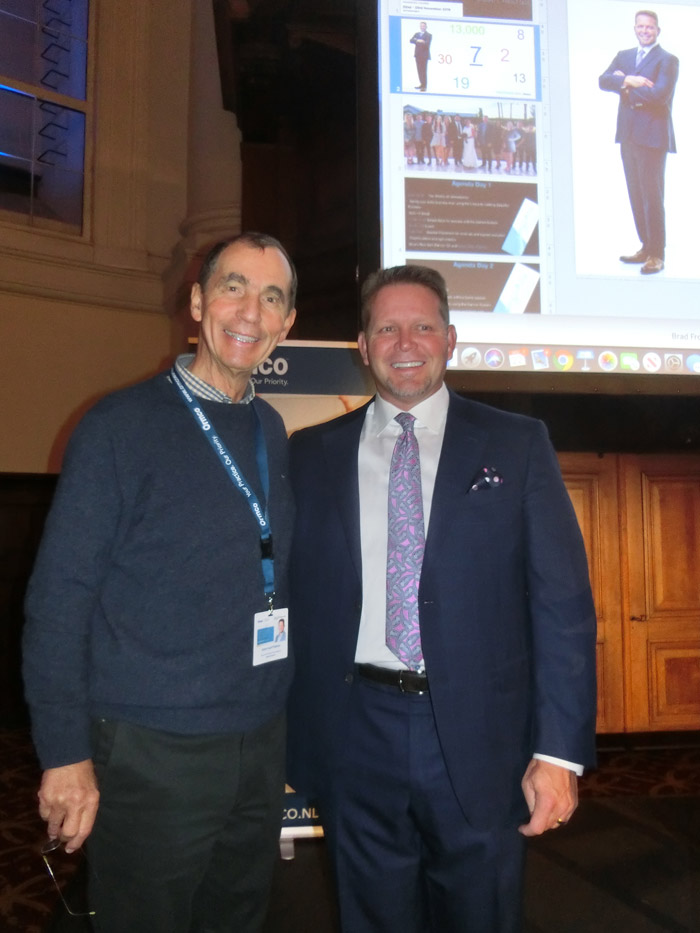
Zirkonzahn - course at Gais
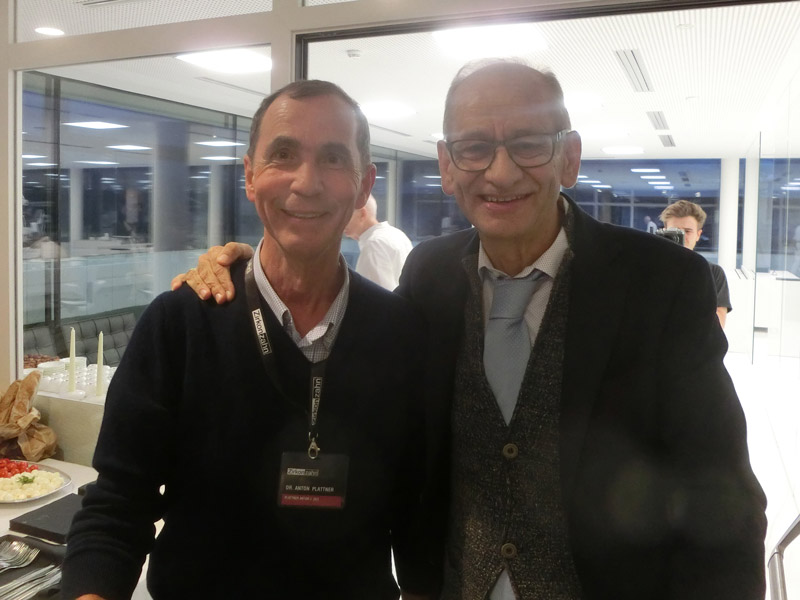
ITI Congress at Riccione
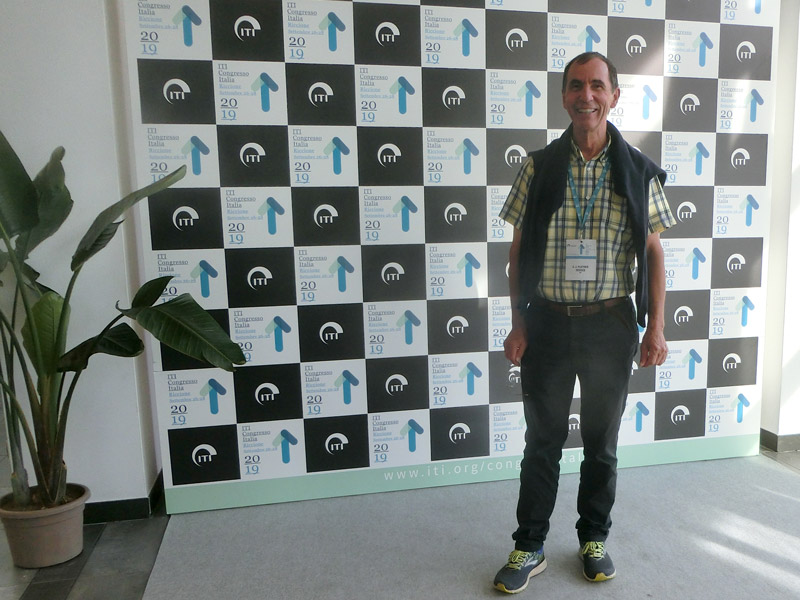
EXPO at Rimini
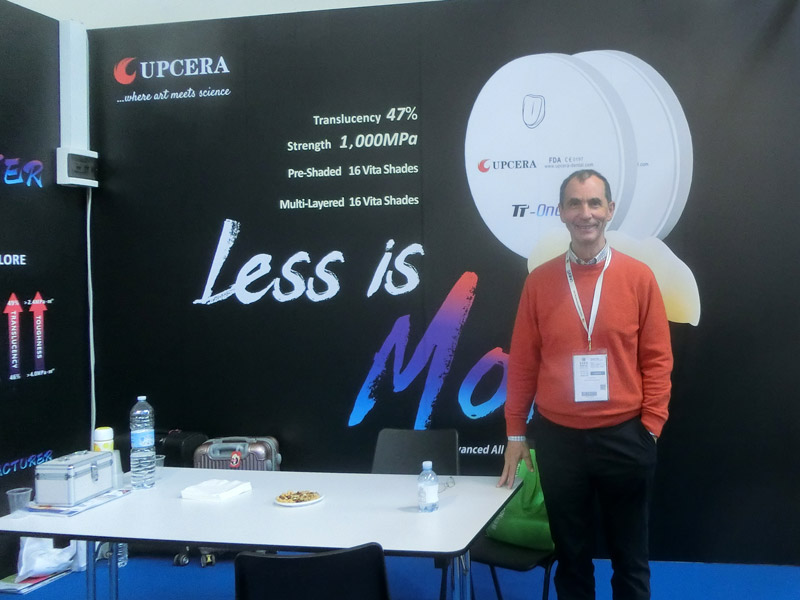
Partecipation to SIDO at Rome
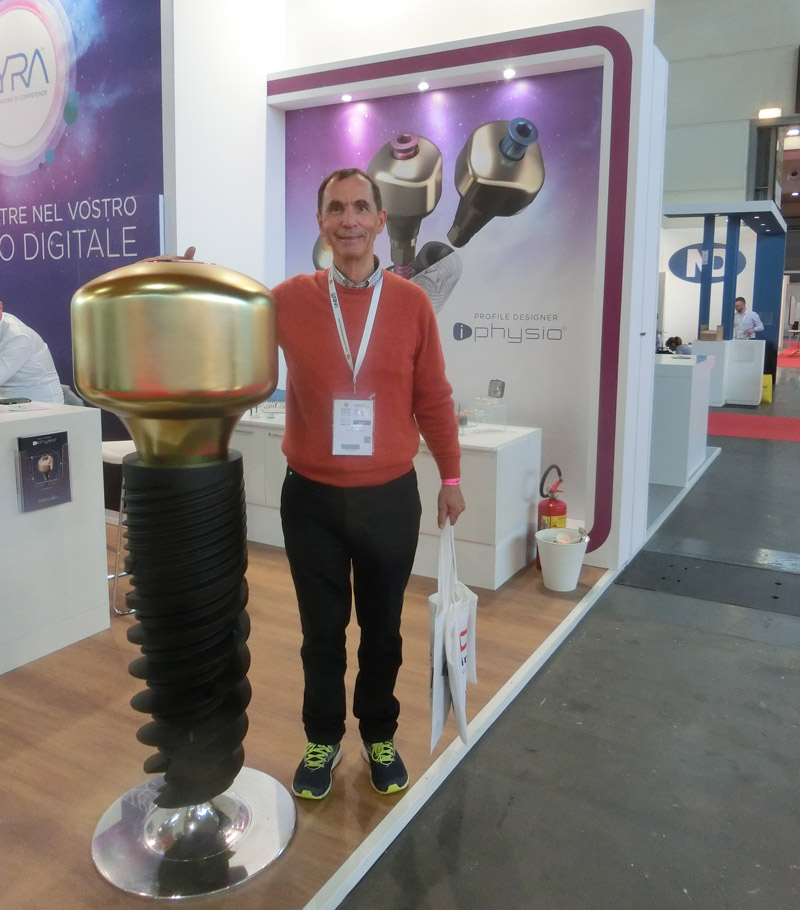
Participation at AAO at Los Angeles
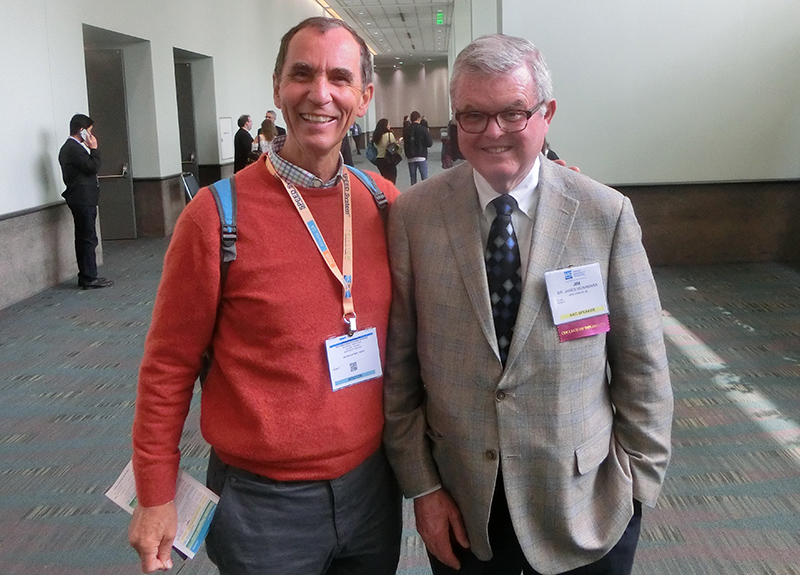
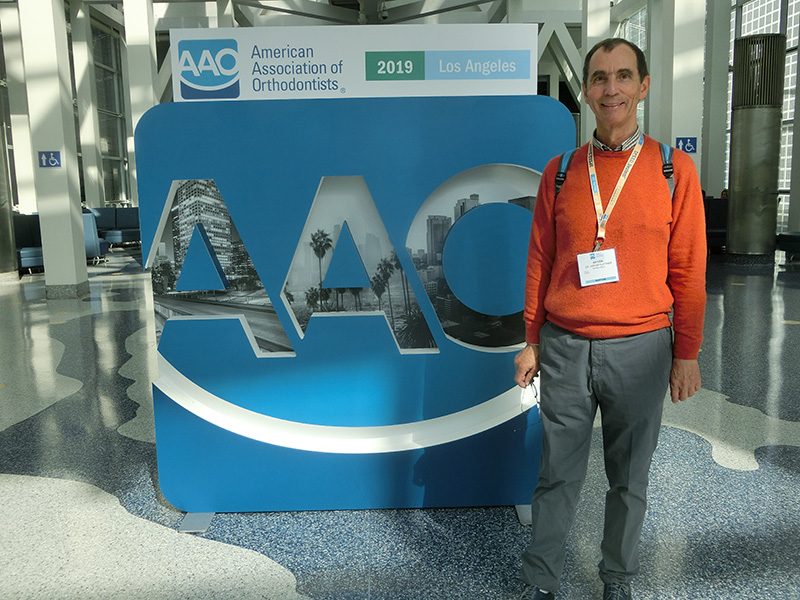
Lecture to worlddentalconference.org at Praha 25-27.3.2019
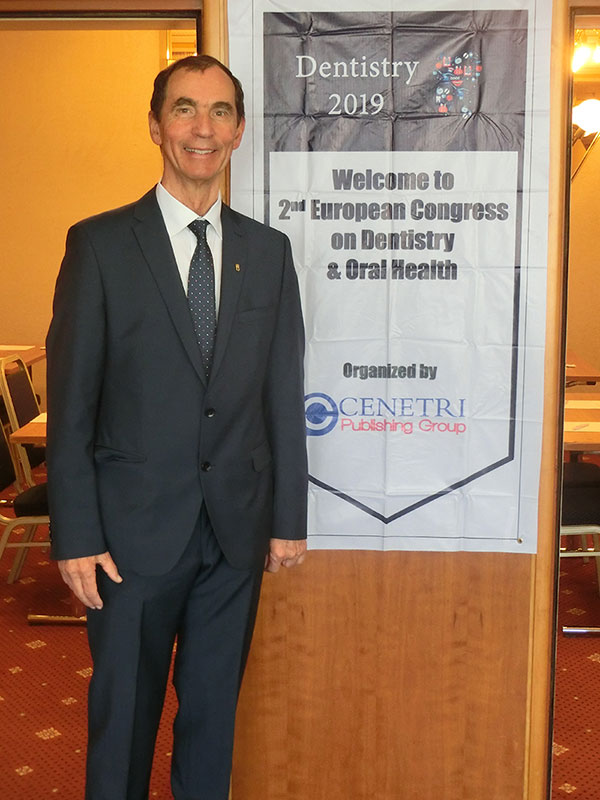
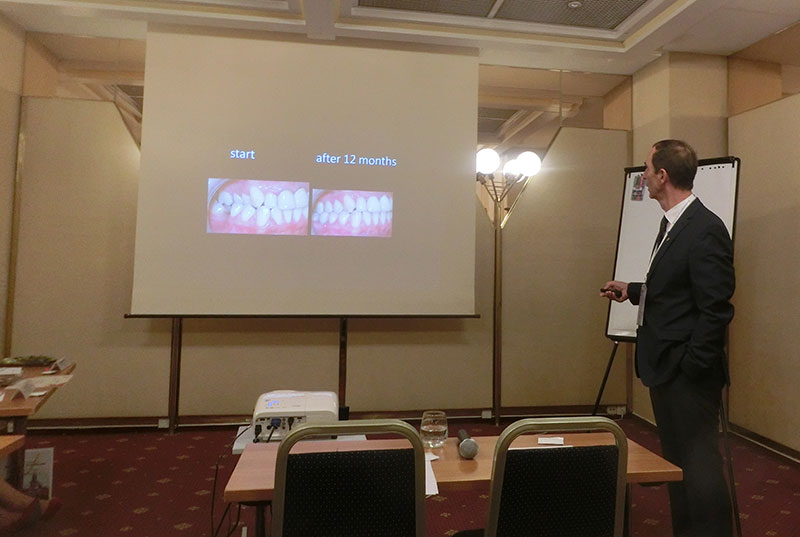
Participation at the Sido Congress in Florence from 11 til 13 October 2018
Participation at the Face Symposium in Vienna - 28. til 30. September 2018
Participation at the Carriere Symposium in Paris - 20. - 22. September 2018
Conference AAO at Washington - april 2018
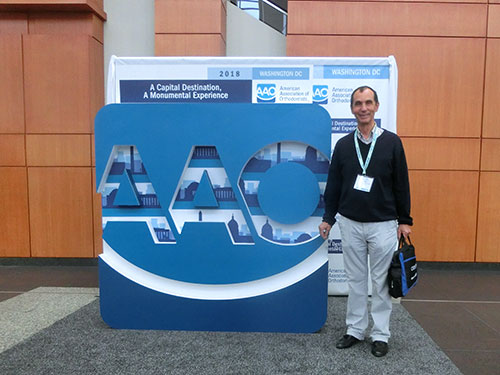
Conference at Napoli - March 2018
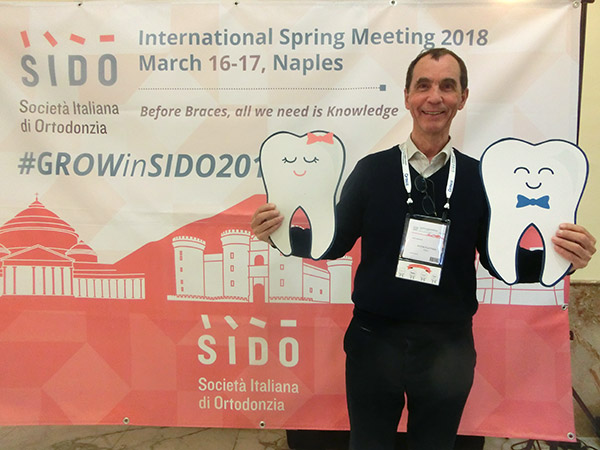
In Bressanone, it is easy for patients to laugh
Interview with dentist Dr. Anton Plattner
Anton Plattner has been working as a dentist in Bressanone for 40 years now and is considered to be a pioneer in the field of minimally invasive treatment of misplacements of teeth and of implantology. Who rests, rusts – that has always been his credo and because of it, he always traveled around the world for training courses and international congresses. Nowadays, he himself is a speaker, who is very sought after. Now, the time has come for him to slow down professionally. He knows, that his patients are in good hands, after all his daughter Julia with her partner Markus, and his son Florian are following in his footsteps.
In an interview with the “SÜDTIROLERIN” the passionate dentist took a look into the past and into the future.
Why did you decide to become a dentist?
At the beginning, I worked as an anesthetist and an intensive care physician at the University Hospital of Innsbruck, where I also completed my training. On the weekends I worked as an anesthetist in Brunico e Vipiteno. All those night shifts bothered me and I felt really overwhelmed. Therefore, when the professor of the dental clinic of that time offered me the possibility to specialize as a doctor, I didn’t think twice and immediately quit the well-paid job as an anesthetist. The training to become a dentist was dry, intense and hard. We had to carve teeth out of a plaster block, only later we were allowed to treat real patients. Sometimes, I also thought about giving up, but the years passed quickly and after my graduation in 1981 I opened my first clinic in Bressanone.
Why did you decide to become self-employed? How was the beginning in your clinic?
For me, there were only two options: either a leadership position in the clinic or self-employment. Becoming a senior physician would have taken at least ten more years after my graduation, but as a dentist I could become my own boss after just two years. After my training to become a specialist, I immediately opened my first clinic in the center of Bressanone with my own dentistry included. From the beginning on, I was very successful and I already had a full schedule on my first day, with a waiting list for new patients of six months. My personal happiness with my wife Astrid and my five children, who were born between 1982 and 1992, accompanied me on the job.
Which fields did you specialize yourself in?
In 1993 I specialized myself in implantology, because the demand for it was high. I was able to learn with Prof. Buser from Bern. I then worked with an implant system that is considered to be the best on the market. In 2002 I completed a two-year training regarding teeth and jaw regulation in Vienna, with Dr. McGann from California. After that, I was able to offer my patients the entire spectrum of dentistry.
You can now look back to 40 years of professional experience. What has changed in dentistry?
A lot of things have changed in favor of the patients. 40 years ago, going to the dentist was associated with pain and anxiety. Implantology was still in its infancy. Implants were still a great risk, because the probability of rejection was very high. Nowadays, implants are the standard used for closing a gap in a very short time. Equally, in the field of teeth regulation, there has been made a lot of progress. In the past, it was very complicated, and it was nearly always necessary to extract healthy teeth in order to treat teeth misplacements. The devises used in this time could be seen as torture instruments. Nowadays, teeth regulations are simple and transparent, thanks to the minimally invasive methods. It is now the exception to extract healthy teeth.
What are your goals in your daily work?
My goal is a satisfied patient with healthy teeth. There is a good solution for every problem regarding teeth. The trick is it, to find the right diagnosis and afterwards, to accurately plan the treatment with the help of pictures. In my book, which I also distributed at universities, I described the treatment using the minimally invasive method.
In order to keep up to date, you have participated in countless courses and congresses around the world. Why has that always been important for you?
Training is the key to success. In order to be able to offer the best treatment, you need curiosity and a thirst for knowledge. What has been the best five years ago, is already outdated today.
You are now considered to be an international expert in the field of teeth regulation and are invited to speak at a lot of different congresses, the last of which in Singapore. What did you talk about?
In Singapore, I talked about two cases I worked on myself. Both patients were facing two major jaw operations. I explained how to treat even severe cases of teeth misplacements without risky operations and only using brackets and some other minor tools. At the beginning of February 2018 I participated at a dentist congress in Cape Town, where I also talked about minimally invasive teeth and jaw regulation.
Your daughter Julia and your son Florian both decided to become dentists. Have they inherited their passion for dentistry from you?
I managed to awake in my two youngest children the interest in dentistry. Being a dentist is no easy profession, it needs strength and energy, but if you are able to help someone, then the profession brings a lot of joy and satisfaction. Julia really enjoys orthodontics, she already accompanied me to the world congress in Washington while she was still in high school. Florian is very enthusiastic about oral surgery and implantology, and he re-evaluates his treatment methods with surgeons from all over the world.
What challenges can your young successors expect?
In my practice, I offered all the disciplines of dentistry on my own. In the future, my son Florian will take care of oral surgery and implantology, while my daughter Julia is going to treat crooked teeth and is going to take care of young patients. Her partner Markus will be responsible for fillings, crowns, bridges and prosthesis. In Bressanone, it is easy for patients to laugh, because dentistry will get better and better. I have taught my followers how to avoid making most mistakes and I gave them the secret of minimally invasive dentistry as a gift for the future.
What are your plans for the future?
Nobody can foresee the future, but my goal is to advise my successors regarding diagnoses and treatment plans, exactly like a navigator in a car. A navigation system can be turned on when needed. I will continue to participate in world congresses and to speak in front of others, because my passion for dentistry is going to be with me for the rest of my life. In addition, I would like to continue to travel and to have more vacations with my wife Astrid.
Interview: Barbara Zöll
Participation at the Damonforum - Cape Town, February 2018
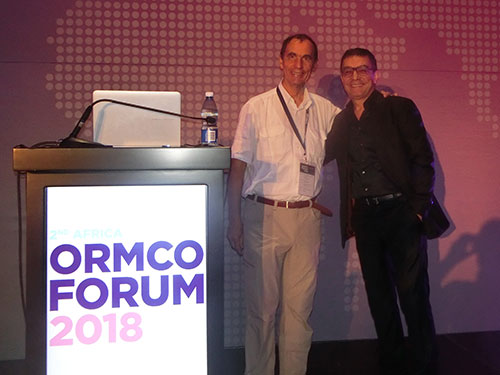
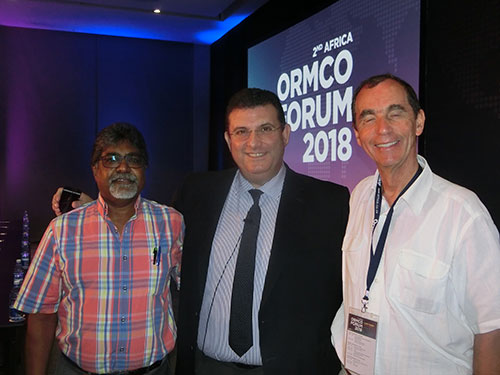
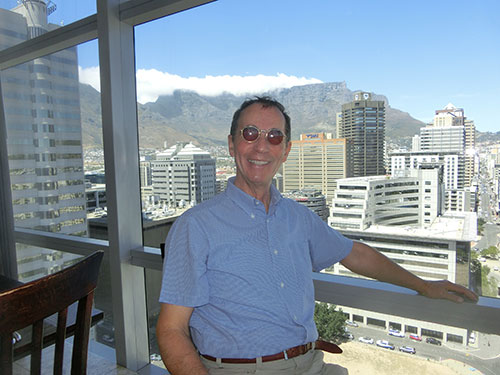
Conference at Singapore - November 2017
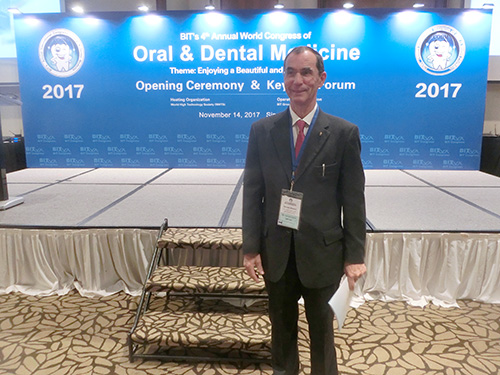
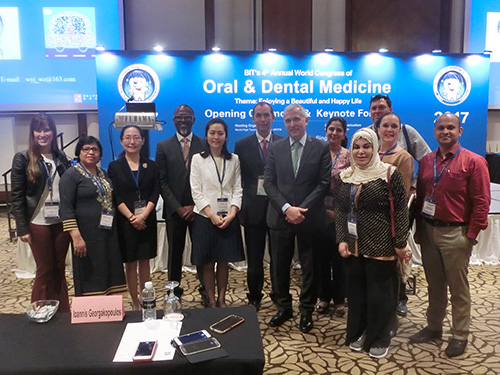
The pioneer
Interview with dentist Dr. Anton Plattner
Orlando, San Diego, Singapore - the dentist Anton Plattner from Bressanone has been traveling around the world for years in the service of dental health and is seen as a pioneer in the area of the minimally invasive treatment regarding the malposition of teeth. He communicates with collegues from all around the world and informs them about the new method at international congresses. In the interview with "Südtirolerin" he talked about the minimally invasive method, his book and about news regarding his dental practice.
You are seen as a pioneer regarding the minimally invasive treatment of malpositions of teeth. As an expert you're traveling around the world in order to share your experience at international congresses. How did you come to this innovative method?
Ten years ago, I participated in he Damon Symposium in Barcelona. Dr. Damon spoke in front of 2.000 orthodontists and explained his innovative method of the minimally invasive treatment. The third picture in his lecture surprised me. He said: "Forget the dogmas regarding the jaw regulation!" Then he showed us, how easy it is to correct even serious defects. There are more than 60 schools that provide methods for the treatment of teeth. I use the method of Dr. Damon and over the years I have also improved it.
What makes your method different from others? Aren't braces always braces?
Unfortunately, many of my collegues are still using the methods of old schools with complicated tools. This means that often healthy teeth are extracted in order to apply braces. Nowadays, healthy teeth should only be extracted if they don't fit the face or if the mouth seems to be too full. It is no longer necessary to extract teeth because of crowding. In November, I am invited to speak in the World Congress in Singapore. There, I'm going to explain how easy it is to treat difficult malpositions without extracting healthy teeth and without risky operations.
You have even dedicated a book to this minimally invasive treatment with the title "Orthodontic System Plattner". What is the purpose of this book?
The lecturers of the universities should read this book. Then, they should pass on my message to the students so that the minimally invasive treatment will be used as the standard method for dental regulation. The book should be a navigator for young orthodontists. We should finally stop using the old methods.
You are always on the road, at the service of your patients and you participate in countless congresses during the year in order to further train yourself, like in Orlando or San Diego. Which news did yo u bring back with you to South Tyrol?
Training is he key to success. I have participated in countless congresses in Italy and abroad and exchanged experiences with other lecturers. By comparing the different methods I learned to separate the wheat from the chaff. I've felt the urge to share my experience and my knowledge, because I'm convinced that the minimally invasive method will spread in no time. I am also delighted, that my daughter Julia, together with her boyfriend Markus, is going to open her own dental practice in January 2018, where she will use my minimally invasive method. My son Florian will support her with minimally invasive implants. I will continue to participate in congresses and to share my knowledge with collegues. It will not get boring. Dentistry is very exciting and every day is like an adventure in the mountains: You need strenght, common sense and a defined goal. Every congress is an enrichment for my practice and a push of motivation to treat patients even better.
Barbara Zöll
Conference at San Diego - April 2017
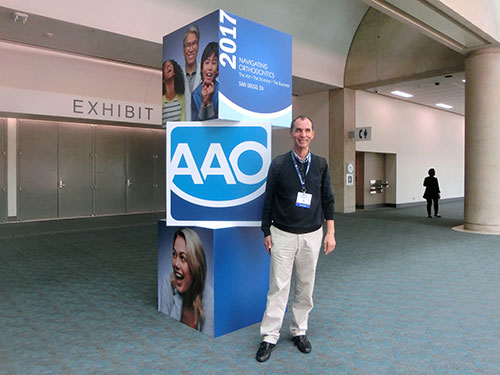
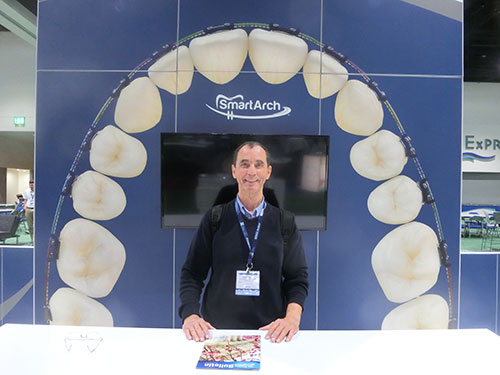
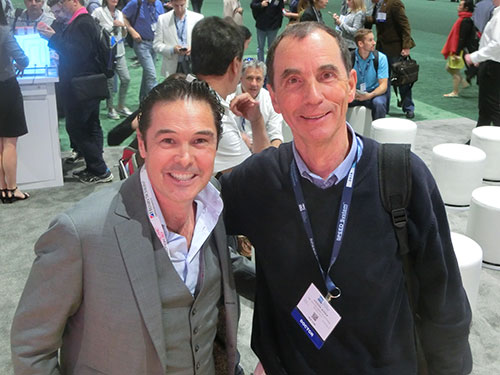
SIDO Conference at Florence
With Prof.ssa Paula Cozza - president SIDO Italia, Rome
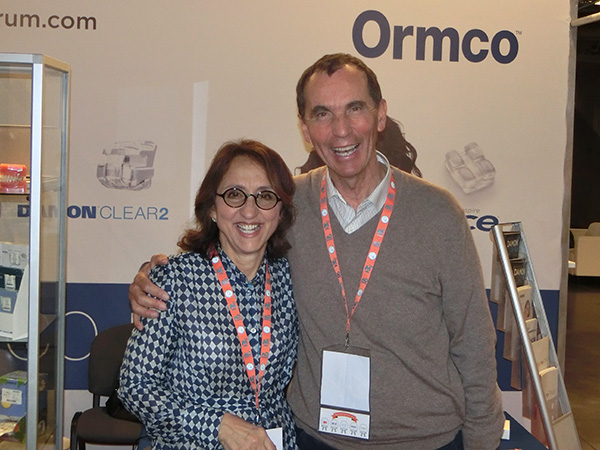
Damonforum 2017 at Orlando with daughter Julia
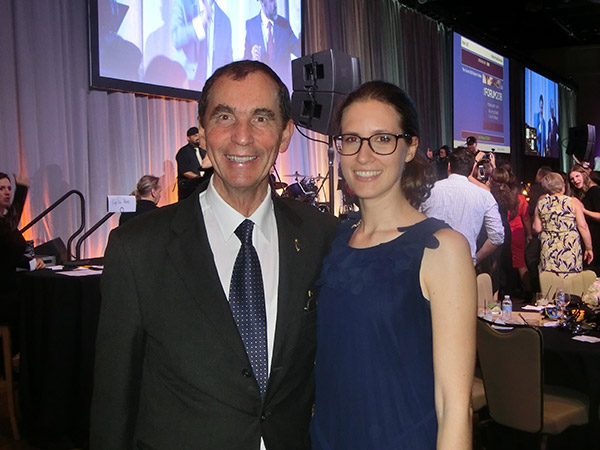
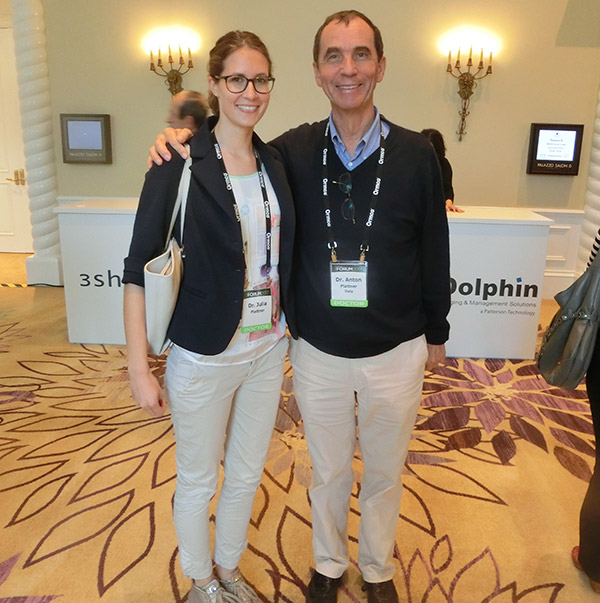
BIT's Annual Global Health Conference 2016 Taiwan
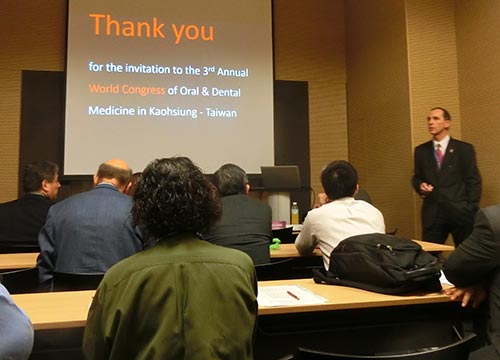
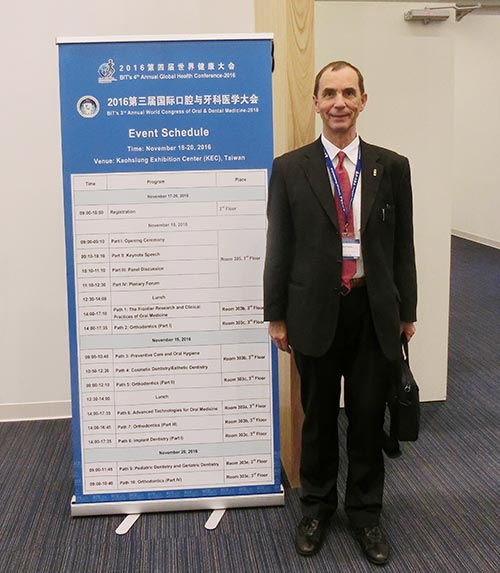
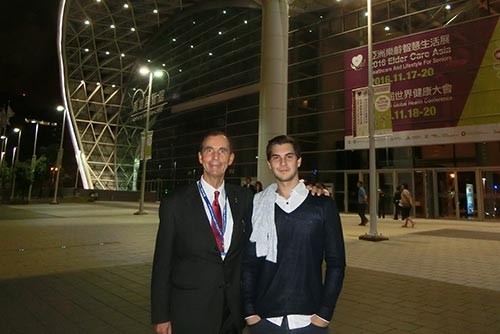
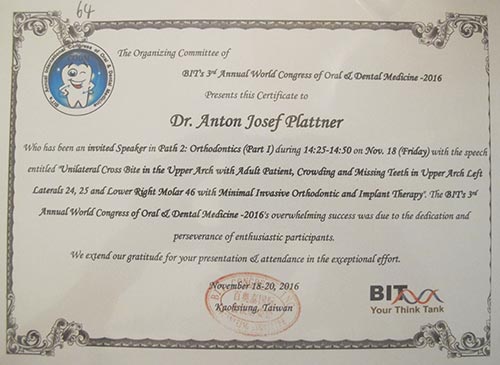
At the AAO Annual Session in Orlando with daughter Julia
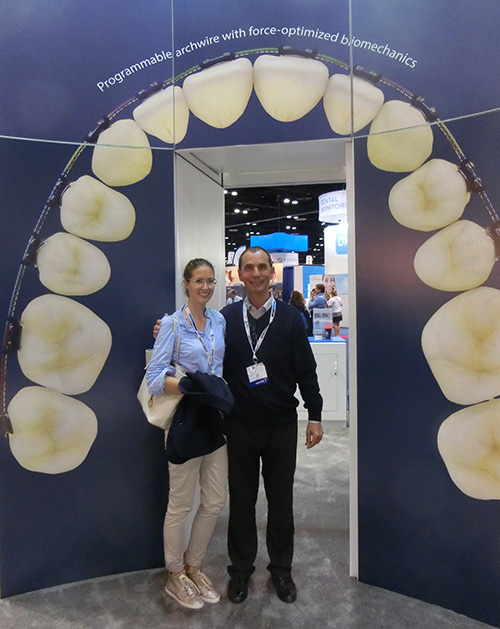
Doc. Plattner with son Florian at the Damon Symposion in Los Angeles
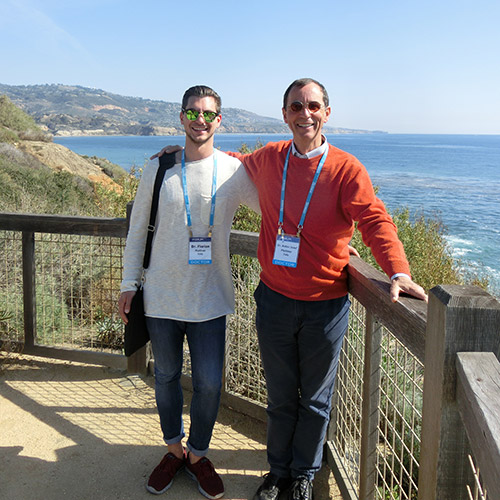
Dr. Plattner with Prof. Hunt at London - WFO Congress
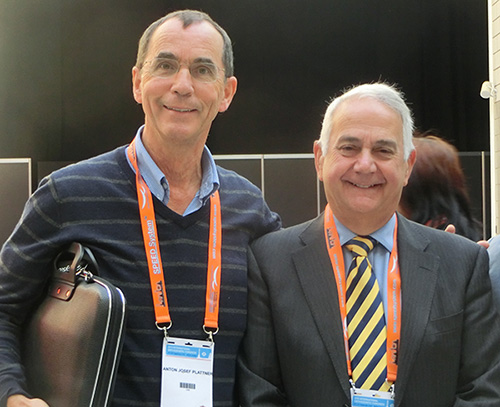
AAO Congress in San Francisco
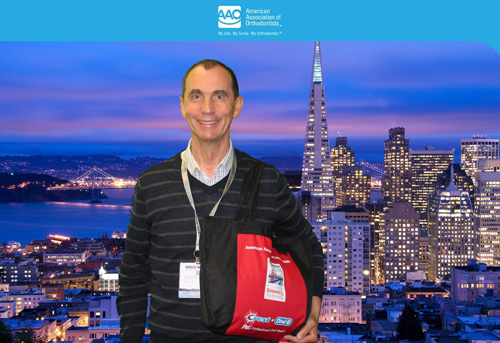
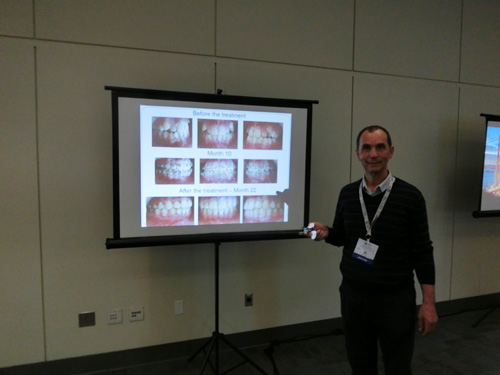
Damon-Forum Orlando
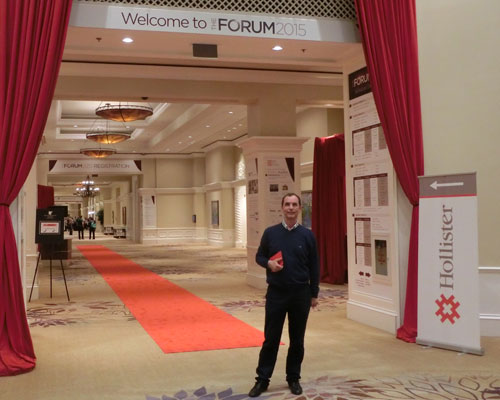
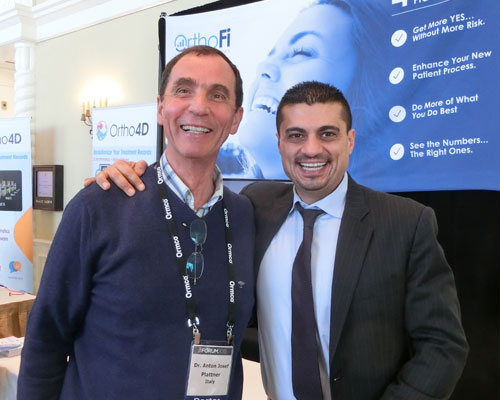
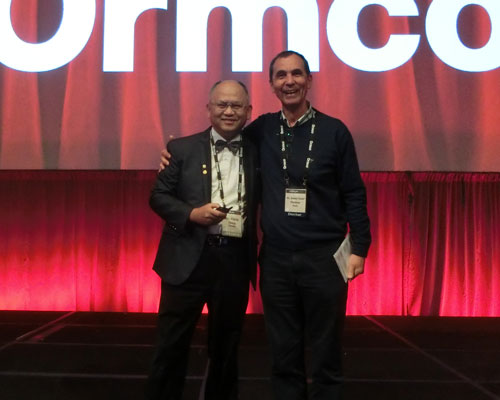
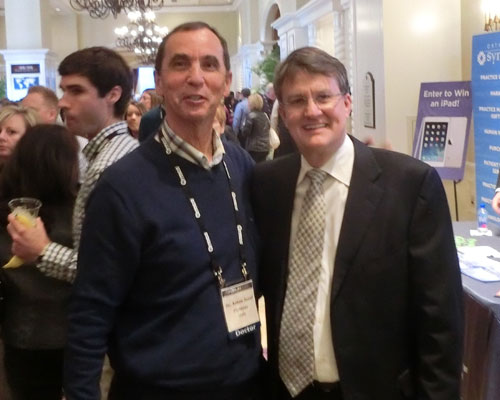
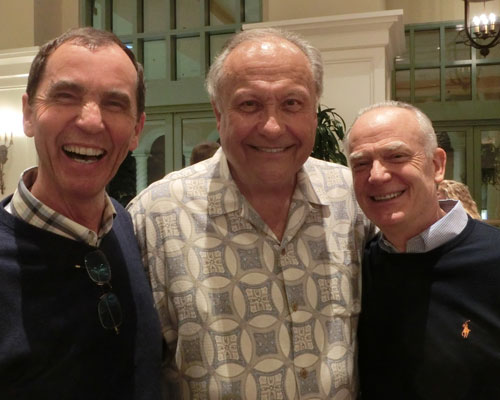
Participation at the Damon-Forum in Orlando with worldwide bests orthodontists.
Prof. Chris Chang, Prof. Damon, Prof. Badavi, Prof Bagden, Prof. Sarver, Prof. Giuducci, ...
The Royal Hospital at London

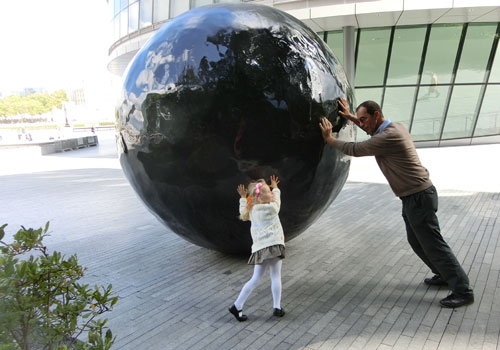
Office course at Taiwan in Beethoven clinic with Prof. Chris Chang
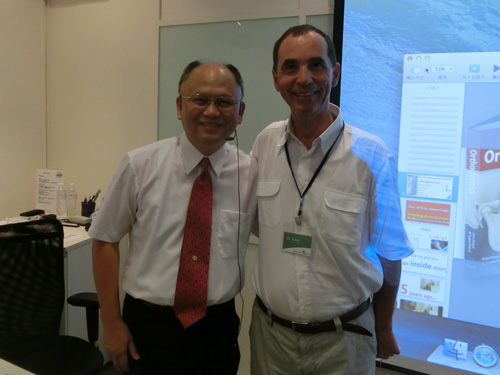
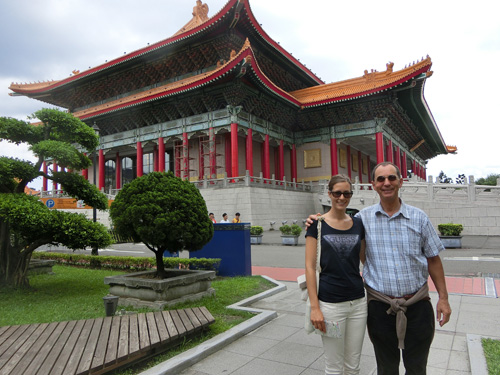
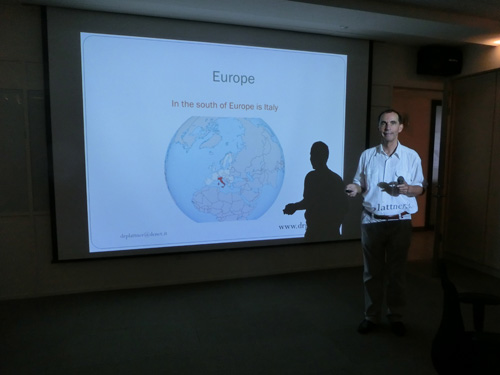
AAO Congress at New Orleans
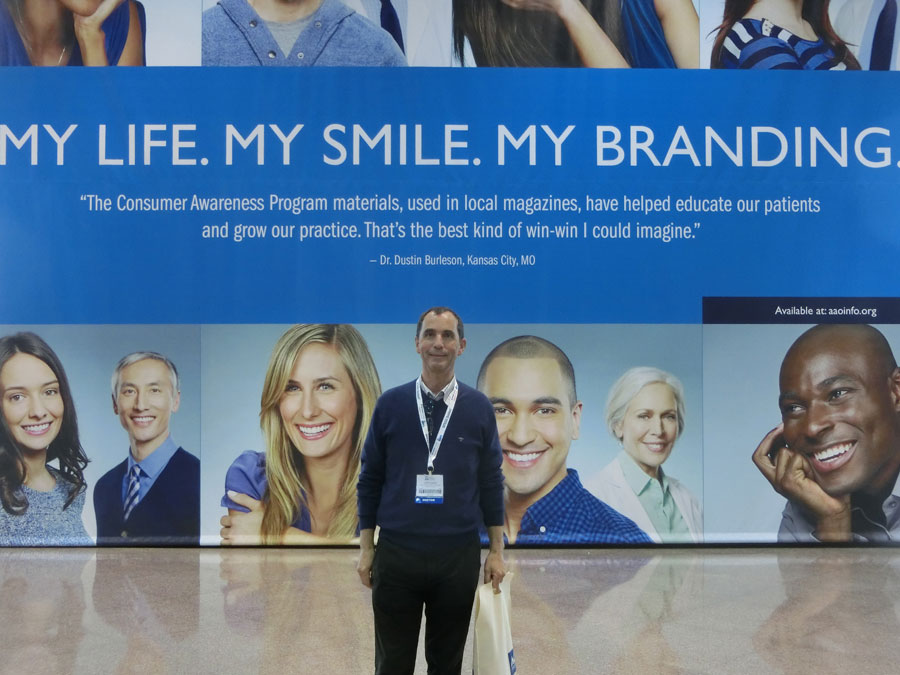
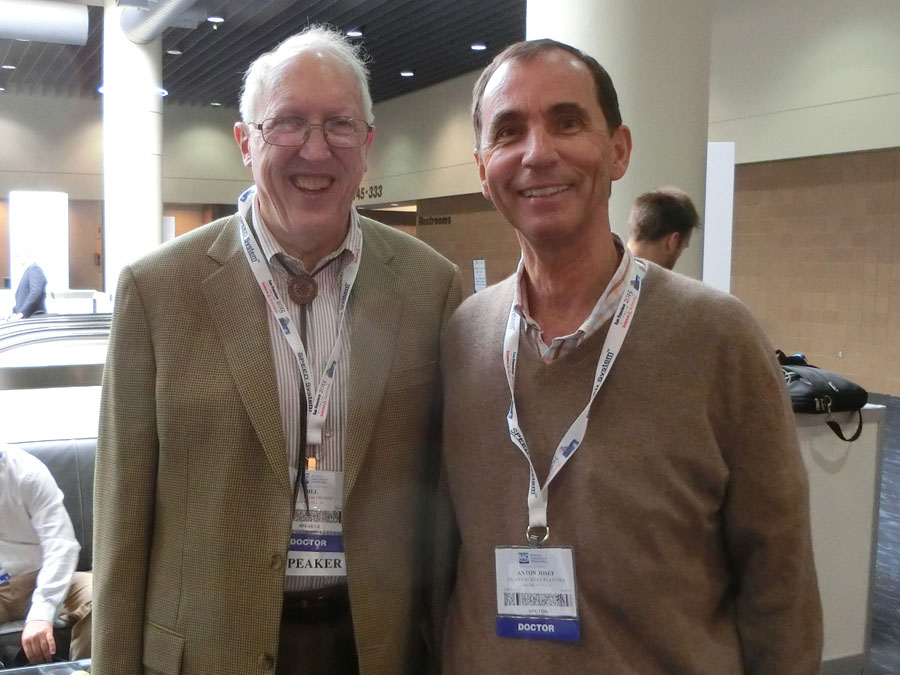
With Prof. Proffit
Congress at Phoenix
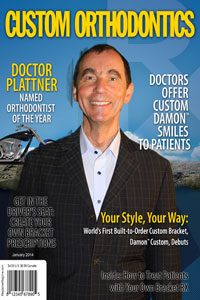
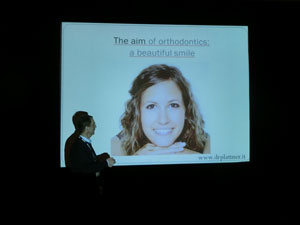
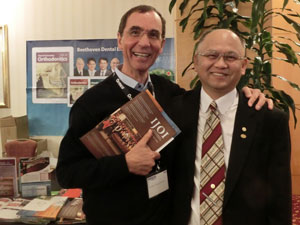
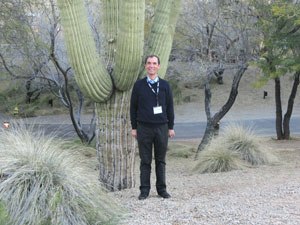
World Congress
In Philadelphia
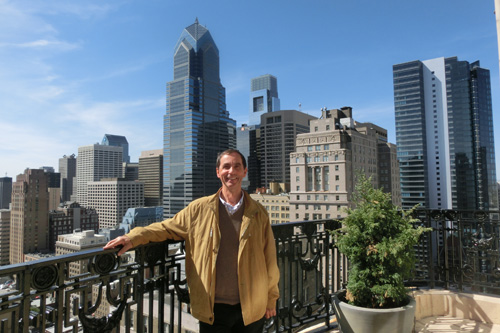
Dentist with passion
Interview with Dr. Anton Plattner on trends in dentistry
“Standstill means going backwards”, so goes a famous saying. Also the renowned dentist Anton Plattner from Brixen believes in it. Therefore he invests more than 300 hours per year in training events at home and abroad. He is currently the only dentist from South Tyrol, who is doing a master training in orthodontics in Munich. In an interview with “Südtirolerin”, the dentist speaks about the future of dentistry.
The “Südtirolerin”: You have been a dentist for over 30 years. What has changed regarding the treatment since your beginning?
Dr. Anton Plattner: In the first ten years of my professional experience, dentists had primarily reparative tasks, when the damage had already occurred. Caries treatments were common. Previously, sick teeth had to be pulled out much earlier. They were replaced by removable dentures or fixed bridges. In a complete loss of teeth there was only the possibility of prosthesis (denture). In recent decades, dentistry has made enormous progress. Today the preservation of teeth into old age is the focus. If it’s not possible to avoid the loss of teeth, the implants have become standard. The advantages are obvious. Thanks to the anchoring with a titanium screw directly into the jawbone, the adjacent teeth must no longer be polish. The healthy tooth structure remains. Contrary to popular opinion, implants are also cheaper, because only missing teeth need to be replaced. Unlike bridges, implants can be maintained like your own teeth. Finally, also the optical result is more beautiful. Implanted teeth are indistinguishable from real ones.
Published in “Südtirolerin” (Read the original article)
The “Südtirolerin”: For many years you have been visiting world congresses around the globe. Why does a South Tyrolean dentist take part at these events?
Dr. Anton Plattner: Here the Olympic motto is true: Being there is everything. As part of these conferences with over thousand dentists and 300 exhibitors the best dentists in the world speak about news in dentistry and present the latest results. For five years, curiosity has been making them attractive to me. They are a unique opportunity to get to know colleagues and to network internationally. My global network comes, ultimately, to my patients good, because in special cases I can discuss with other specialists about it.
The “Südtirolerin”: What’s new in implantology?
Dr. Anton Plattner: Implantology is marked by rapid advances. There are new teeth in no time. A natural imitated tooth root made of titanium is inserted into the jawbone. Subsequently, a temporary restoration is placed. The titanium screw is healed after about two to three months and the temporary restoration is replaced by the crown made by the dental technician using an impression. It fits perfectly in shape and colour to the remaining teeth. Thanks to implantology, you can have teeth also with a very old age. For example, I have recently supplied a 90-year-old patient with implants. Even with few bones, implants can be placed, thanks to shorter screws.
The “Südtirolerin”: What are the latest trends in the jaw-regulation?
Dr. Anton Plattner: Crooked teeth are no fate anymore. They can be treated simply and well. Unlike the past we are now working with very delicate and modest forces. The treatment is less painful and faster. The teeth are not only moved in the bone, but with the bone. Within a short time, the jaw becomes wider and the smile more beautiful. Unlike the past, nowadays, at the regulation the face is involved in the diagnosis and the treatment, so that the teeth are in perfect harmony with its own face. But the jaw-regulation has not only aesthetic benefits: Also the prophylactic aspect shouldn’t be forgotten: Straight teeth can be maintained easier and better. Tooth decay can be prevented better.
The “Südtirolerin”: What’s the secret of your success?
Dr. Anton Plattner: I take a lot of time for my patients. The person as an individual is in my centre. My ultimate goal is to search the best treatment for each person in dialogue with the patient. Therefore, I look for information all over the world and invest about 300 hours per year of my free time in training courses. I also put a lot of emphasis on transparency and comprehensive explanation. Confidence is an important cornerstone for the treatment. A major role plays also a competent team in order to look after the patients optimally.
Interview by Barbara Zöll
Radio surgery on periodontal disease
On April 2, 2012, Dr. Anton J. Plattner gave a live consultation in RAI Sender Bozen from 9 to 10 o’clock about periodontal disease. Periodontal disease is the second most common disease after caries. In South Tyrol, more than half of the population is affected by this disease. Dr. Plattner has offered in the live show tips and tricks on how to avoid the disease and what to do if you are affected.
Dr. Plattner is grateful for the invitation of Rai Sender Bozen. “I hope that my message of dental conservation was understood by the audience.”
30 years in the service of dental health
Dentist Anton Plattner celebrated on his 30th career anniversary in Sarns on April 6, 2012.
His profession is his great passion. It wasn’t possible to overhear that during his lecture on the occasion of his 30th career anniversary. The dentist Anton J. Plattner from Brixen reported with an infectious enthusiasm about the various possibilities of modern implantology – his favourite topic, for which he invests every year countless hours of training and for which he also likes jetting around the globe. It’s not for nothing that many patients have been trusting him for 30 years, among them the bishop Wilhelm Egger, who recently died, and from whose estate the dentist was awarded a medal of merit in consideration for his work. After the vivid presentation the evening ended sociable. His daughter Barbara framed the feast on her harp.
Published in “Südtirolerin” (Read the original article)
Practice celebration 30 year – Dr. Plattner
The journal to the anniversary
TOPICS:
1. A look back
2. The current practice
3. Development
4. “Stillstand means going backwards” – conferences around the globe
5. 8000 in the practice:
a. Dental surgery – Gone off the rails?
b. Implantology – the “new” dentistry
c. Prevention is half the battle – The prophylaxis is the future
6. What is the secret of his success?
7. Puzzles – Jokes – Kids page
(Read online)
Paint – a passion
Some images by Dr. Plattner

Two crows in the mountains

Meadows before being cut

Summer Dream

Exotica
“This picture was the last one for the birth of my fourth daughter and it has been decorating the waiting room of my practice for almost 20 years. It is my favorite picture, because it’s a good end for my painting career!
The perfect smile
News from the dentistry
Who doesn’t want a perfect smile? The stars show as the way: Teeth as snow, perfectly straight radiate from the covers of glossy magazines. Many people take them as a model and have their aesthetically perfect smile created through orthodontics. Anton Plattner, a known dentist from Brixen, who can look back on many years of professional experience, speaks in “Südtirolerin” about the innovations and changes in dentistry.
The “Südtirolerin”: Mr. Plattner, what is important in dentistry in particular?
Dr. Plattner: The most important thing is the right indication, which is the correct diagnosis. Therefore I believe that a dentist must have a wide range of knowledge. Dentistry, similar to the holistic medicine, depends on the fact that the teeth of the adjacent regions aren’t involved. Thus, the advice is much easier. With the correct diagnosis, the current success rate is much higher than before, for example in implantology, at about 97 percent.
The “Südtirolerin”: What were the changes in dentistry in the recent years?
Dr. Plattner: Over the last 20 years a lot has changed, because when I first started practicing, we had a completely different knowledge. At the beginning of the 80s we still worked a lot with prosthesis. That means, if you wanted to replace a missing tooth, you also had to polish healthy teeth, in order to place the fix teeth in between. It was more a form of reparative dentistry. In the 90s, however, there was a big step forward: Implant dentistry has become a common method. With this method, missing natural tooth roots are replaced, mainly by a titanium screw that is anchored in the jawbone.
The “Südtirolerin”: Is there a noticeable qualitative difference between natural and implanted teeth?
Dr. Plattner: Rejection of implanted teeth is very low. The patients who are treated with implants have hardly any problems with them. Visually seen there is absolutely no difference between natural and implanted teeth.
The “Südtirolerin”: How do you see the future of dentistry?
Dr. Plattner: People today pay much more attention to their teeth and go regularly to checks. The dentist of the future will have less to do with the repair of the teeth, but will go over to prophylaxis and will be a “dental consultant”. Maybe one day the progress will make it possible to vaccinate against tooth decay, fillings are then superfluous. Already in the last years the treatment steps in dentistry have become much easier – also considering the material. This trend will surely continue. The orthodontics will always be necessary, only cases of tooth decay will become less and therefore also fillings and implants.
The “Südtirolerin”: What can you do, in addition to cleaning your teeth, to guarantee that your teeth will remain you longer?
Dr. Plattner: The most important thing is probably the constant care. You should visit at least twice a year the dentist of your choice. That is probably the best investment. The worst thing you can do, is letting your teeth degenerate completely to then restore them cheaply abroad.
The “Südtirolerin”: What fascinates you personally in dentistry?
Dr. Plattner: A very interesting area for me is the orthodontics. It is my greatest joy and challenge to provide my patients with a beautiful and untainted smile. It’s fascinating what you can do with today’s means, for example moving crooked teeth with braces and bring them into the right position.
Published in “Südtirolerin” (Read the original article)
Good news from the dental globetrotter
Dr. Anton Plattner about the benefits of modern dentistry
The dentist Dr. Anton Plattner from Brixen is on the way – in the name of dentistry. He attends worldwide courses and international conferences to always be up to date and to be able to offer his patients the best treatment available. Every year, he invests about 300 hours of his free time in training courses. Teeth contribute to a large part to the overall appearance. A beautiful, bright smile signalizes attractiveness and health. If a person is unhappy with his teeth, he has automatically more serious and perhaps tense facial features, because he does not dare to laugh, or because he is ashamed, or because he is embarrassed to “show teeth”. But it doesn’t have to come so far. Today there are thousands of possibilities in dentistry to remedy this. But which one is the correct method? Dr. Anton Plattner visits every year several courses and conferences around the world, for example, he was on a big orthodontics congress in Boston-Convention-Center/USA, a discussion platform for 18,000 colleagues. Here he was able to talk with dentists from all over the world and to obtain a detailed picture of the current state of dentistry.
The “Südtirolerin”: Dr. Plattner, everyone speaks of crisis, also in dentistry?
Dr. Anton Plattner: I would say now is a good time for dental treatment. Because today there are many new, simpler and less painful methods, to give the patient a lasting, beautiful smile. Even in times of crisis, one should not forget how to laugh.
The “Südtirolerin”: What are the priorities and advantages of the "new" dentistry?
Dr. Anton Plattner: In implantology and jaw adjustment. It's incredible, but I can now provide a toothless jaw with dental implants and attach fix crowns on it. That means, the patient has fixed teeth up to his dead, almost real. This is a huge step forward, especially for edentulous patients! The chances of success here are so great that I can offer my patients the following: If his jaw repels the implant, the patient must not assume the costs of the procedure. But that happens extremely rarely. Implantology has proven itself also in the single tooth restoration. Only rarely a healthy tooth has to be sacrificed for a bridge. So we dentists meet more and more our own standards, because the first concern in dentistry is: Maintain healthy teeth. Implantology is now standard and without it there wouldn’t be any dentistry and orthodontics anymore.
The “Südtirolerin”: And what's new in ortodontics?
Dr. Anton Plattner: The special features here are the subtle forces with which we work. Using orthodontics (braces), you cannot only move the teeth in the bone, but with the bone. The jaw becomes broader (5-10 mm!), the teeth straighter and the smile more beaming. The biggest advantage is that you hardly ever have to pull healthy teeth. The treatment works for both children and adults,it is more comfortable and takes less time. In May in Boston at the World Congress, I could see that this orthodontics is not a fashion trend. For me, working with the old methods of treatment wouldn’t be possible. Also new are the mini implants. With these delicate titanium implants (8-10 mm long, 1.8 mm wide), you can prevent quite some jaw surgeries. I also use them for a fixed temporary tooth, for example after an orthodontic treatment, when a tooth is not created. If the bone is fully grown, with about 18 years, the tooth space can be supplied with a fixed implant.
The “Südtirolerin”: There are surely hundreds of implant systems. After which criteria do you make your decision?
Dr. Anton Plattner: Well, that's like in professional sports. Very important are certainly the knowledge and the skills. But no matter how well a skier can ski; if he has a Ski from inferior materials, he will not win the race. And so it is with me. The material has an immense influence on the outcome of my work. I have found for me the best and most comfortable material system and I'm very happy with it. To find the best material and treatment system, I have traveled the world.
The “Südtirolerin”: Thank you very much for the interview, I wish you a lot of success with your work.
Tireless dedication
The dental practice of Dr. Anton Josef Plattner celebrated on April 6, 2012 its 30th anniversary. For the occasion, the dentist invited friends and relatives to a small anniversary celebration in the “Bildungshaus” of Sarns.
Published in “Südtirolerin” (Read the original article)
“The person as an individual is at the center and the treatment method is always chosen individually” says the dentist Anton Josef Plattner from Brixen, who has been leading successfully his practice in the Hofgasse since 1981. This maxim seems to be the recipe for Plattner’s success – and the continuous learning: “I’m always getting new information and lots of knowhow in retraining courses.” Therefore, Plattner is indeed constantly on the move: During the recent years he attended countless training courses and conferences in Chicago, Vancouver, Orlando, Mexico, New York, Denver, Las Vegas and even in Hong Kong. “I invest 300 hours of my free time per year in training courses”, Plattner says and that is “in a time of continuous development absolutely necessary: You can obtain a detailed picture on the current state of dentistry”. Plattner is specialized in jaw regulation and implantology – “in these areas there has been an incredible development in the last years”. Also the familiar and friendly atmosphere in the practice contributes to the patients’ satisfaction – “and of course my competent team”, Dr. Plattner explained, who would like to stay the dentist of trust of his patients for some more years. His successes include not only beaming smiles and beautiful teeth, but also a medal of bishop Wilhelm Egger. The dentist got it for the “smile of the bishop” to which he contributed as his dentist. The success and his philosophy agree with the proud father of five children.

